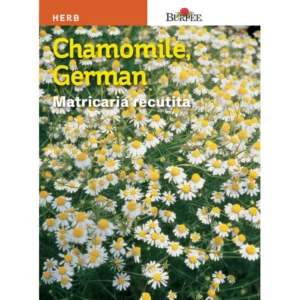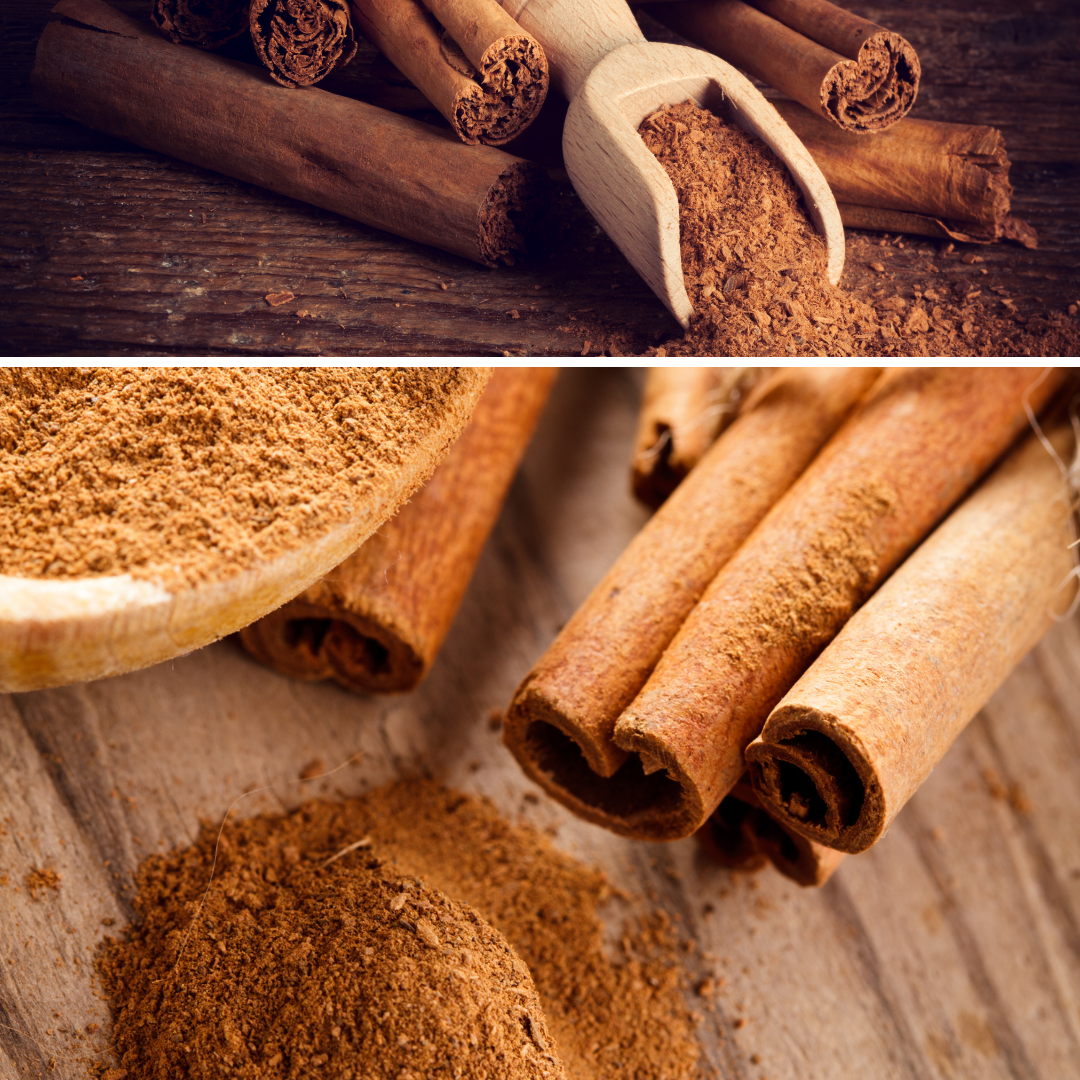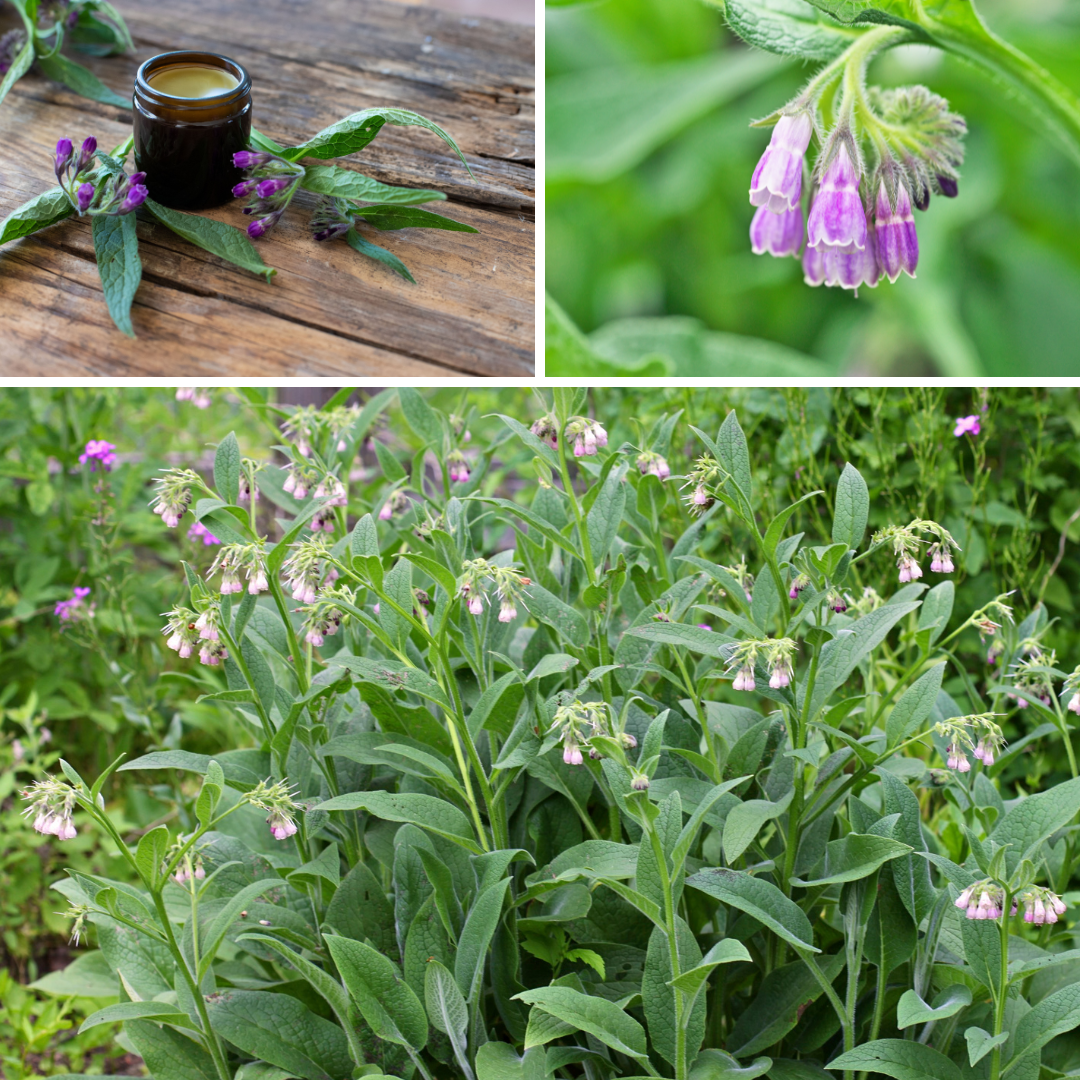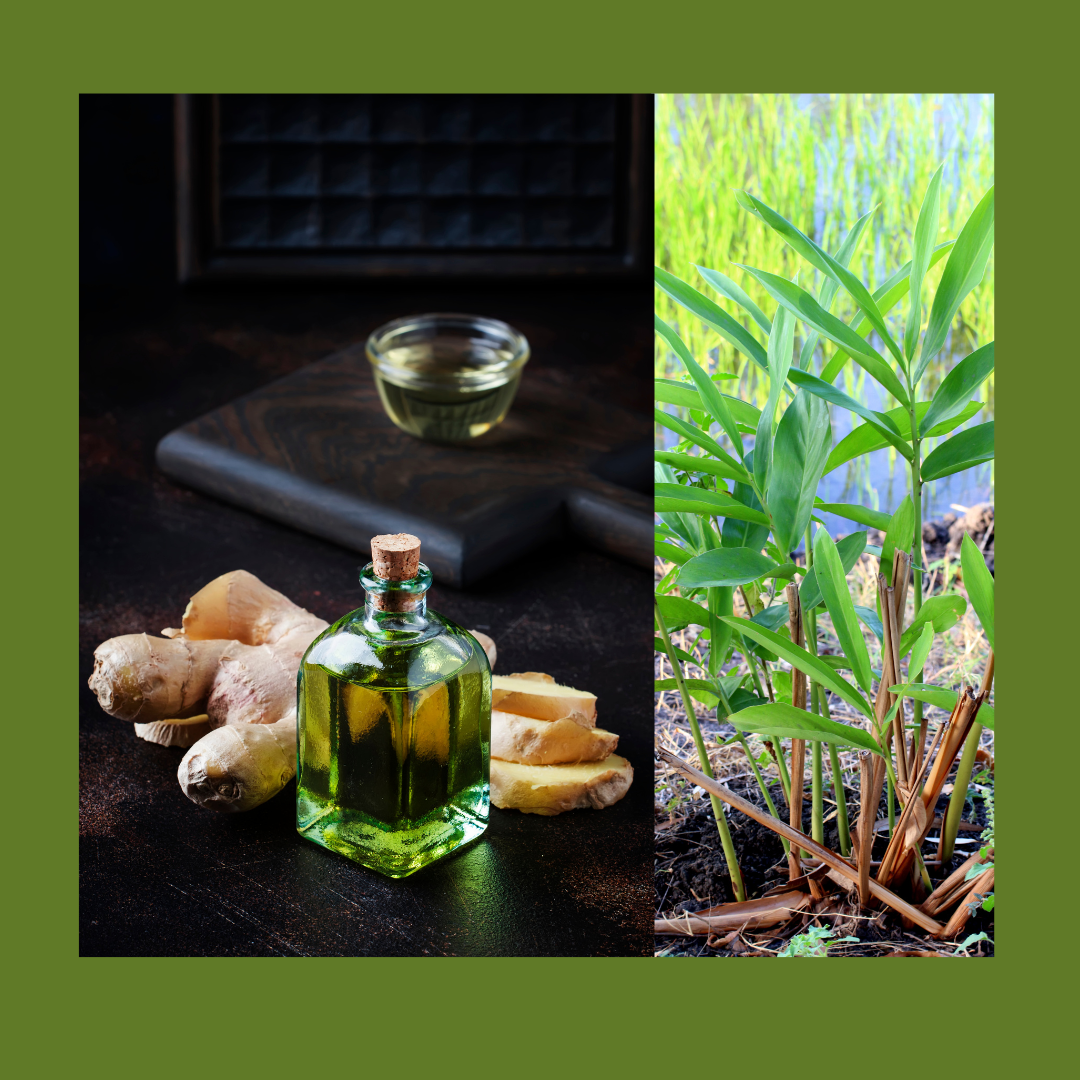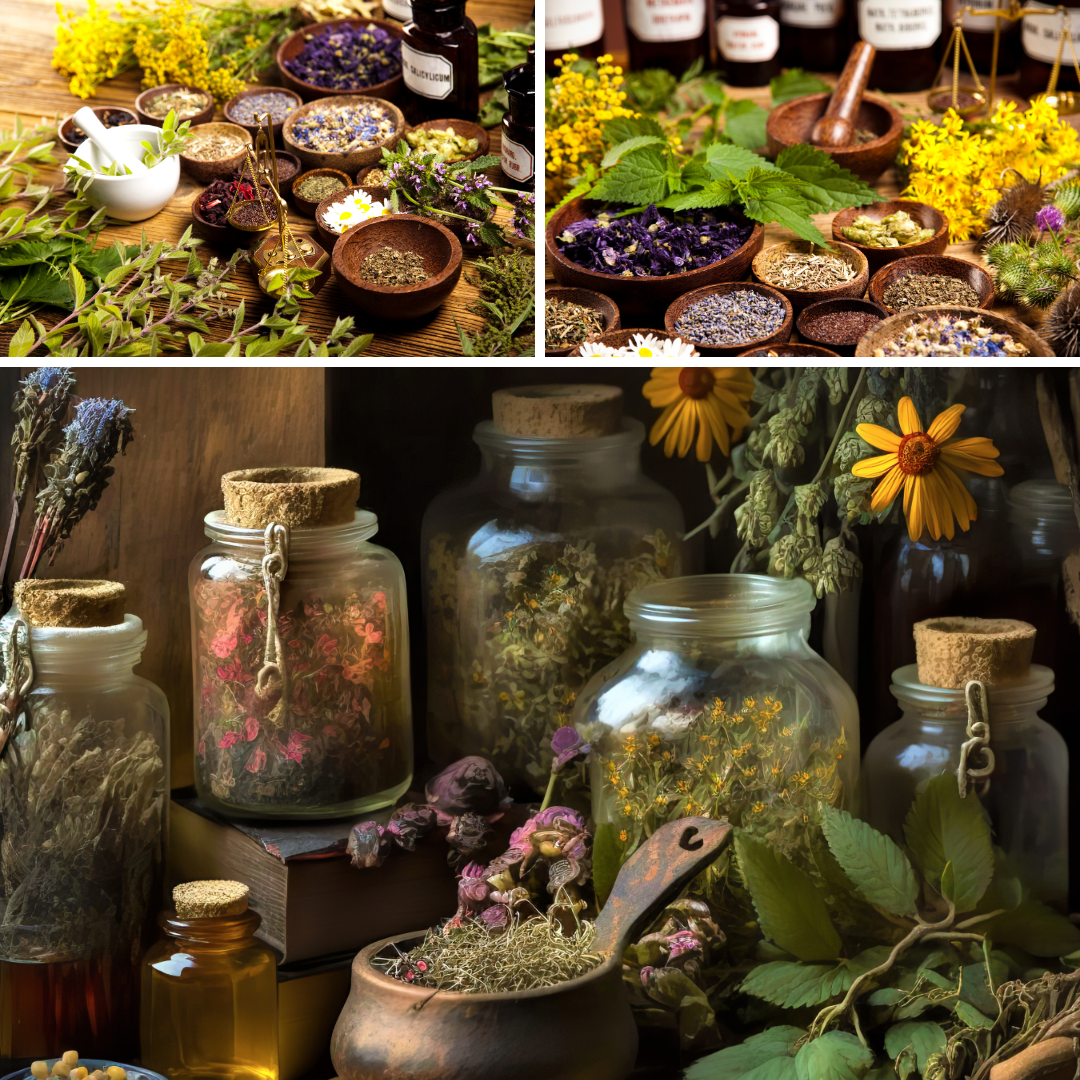
 Chevallier, Andrew. Encyclopedia of Herbal Medicine, pg. 286.
Chevallier, Andrew. Encyclopedia of Herbal Medicine, pg. 286.
Aloe Vera
“Native to Africa, aloe vera is commonly cultivated as a potted plant and has two distinct types of medicinal use. The clear gel contained in the leaf is a remarkably effective healer of wounds and burns, speeding up the rate of healing and reducing the risk of infection. The yellow sap from the base of the leaf when dried is known as ‘bitter aloes.’ It is a strong laxative, useful for short-term constipation.
“Aloe vera has prickly, gray-green, succulent leaves that yield effective medicinal substances.
Habitat & Cultivation
“Native to eastern and southern Africa, aloe vera grows wild in the tropics and is cultivated extensively worldwide. (Aloe vera plants grown as potted plants have a low anthraquinone content.) Aloe vera is propagated by breaking off small rooted plantlets. To collect the gel and bitter liquid, the leaves are cut and drained
Key Actions
■ Heals wounds
■ Emollient
.■ Stimulates secretions of bile
■ Laxative
Research
■ Healing properties
“Extensive research since the 1930s in the U.S. and Russia has shown that the clear gel has a dramatic ability to heal wounds, ulcers, and burns, putting a protective coat on the affected area and speeding up the rate of healing. This action is in part due to the presence of aloectin B, which stimulates the immune system. Traditional & Current Uses
■ Beauty treatment
“Aloe vera has a long history as a skin lotion— Cleopatra is said to have attributed her beauty to it.
■ Western remedy In the West, aloe vera first became popular in the 1950s when its ability to heal burns, in particular radiation burns, was discovered.
■ First aid
“Aloe vera is an excellent first aid remedy for burns, scrapes, scalds, and sunburn. A leaf, broken off, releases soothing gel, which may be applied to the affected part.
■ Skin conditions
“The gel is useful for almost any skin condition that needs soothing and astringing, and will help varicose veins to some degree.
■ Ulcers The protective and healing effect of aloe vera also works internally, and the gel can be used for peptic ulcers and irritable bowel syndrome.
■ Laxative The bitter yellow liquid in the leaves (bitter aloes) contains anthraquinones, which are strongly laxative. They cause the colon to contract, generally producing a bowel movement 8–12 hours after consumption. At low doses, the bitter properties of the herb stimulate digestion. At higher doses, bitter aloes are laxative and purgative.
Chevallier, Andrew. Encyclopedia of Herbal Medicine, pg. 60.
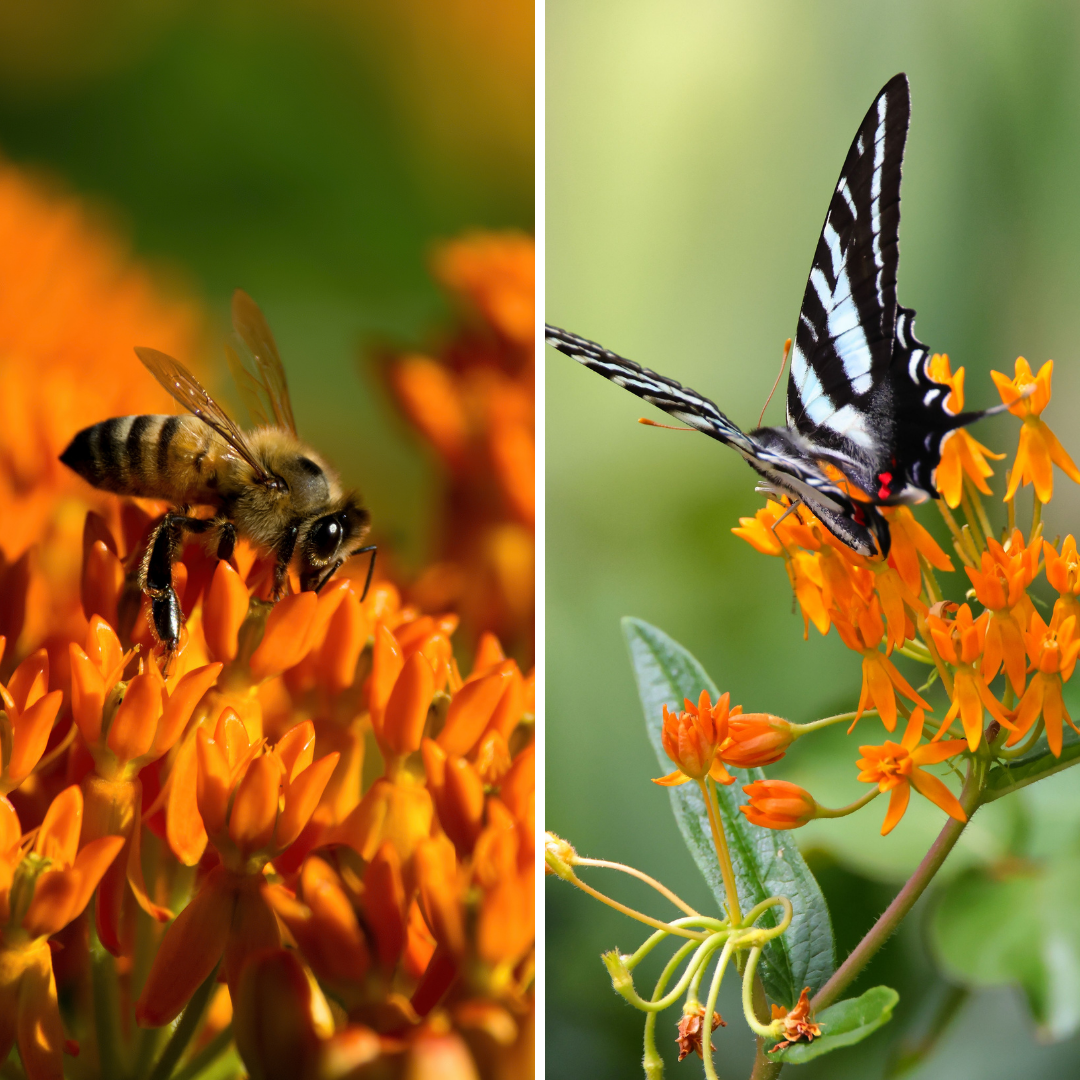
Butterfly Weed
Description
“Perennial, upright herb growing to 3 ft (1 m). Has narrow lance-shaped leaves and spikes of numerous 5-petaled orange or yellow flowers. Habitat & Cultivation This herb is native to the southern U.S. The root is unearthed in spring.
Part Used Root.
History & Folklore
“In North American herbal medicine, pleurisy root was considered a cure-all. It was used to treat conditions as diverse as pleurisy, typhoid, pneumonia, congestion, dysentery, colic, eczema, and hysteria. The Omaha ate the raw root for bronchitis and other chest conditions. Many tribes thought pleurisy root was a good remedy for hot dry fevers.
“Medicinal Actions & Uses Though its most specific usage is relieving the pain and inflammation of pleurisy, pleurisy root hasother applications. It is useful for hot, dry, and tight conditions in the chest. It promotes the coughing up of phlegm, reduces inflammation, and, in addition,helps reduce fevers by stimulating perspiration. The root is also taken for the treatment of chronic diarrhea and dysentery. Related Species A. incarnata and A. syriaca have both been used in Native American herbal medicine to treat asthma. Cautions Do not take during pregnancy. Excessive doses may cause vomiting.” Chevallier, Andrew. Encyclopedia of Herbal Medicine, pgs. 173-174.

Calendula,
Pot Marigold, English Marigold
“Calendula is one of the most well known and versatile herbs in Western herbal medicine. The bright orange petals are an excellent remedy for inflamed and angry skin, their antiseptic and healing properties helping to prevent the spread of infection and speed up the rate of repair. Calendula is also a cleansing and detoxifying herb, and the infusion and tincture are used to treat chronic infections.
Habitat & Cultivation
“Calendula, native to southern Europe, is cultivated in temperate regions around the world. Easily propagated from seed, it flourishes in almost all soils. The flowers are harvested as they open in early summer, and are dried in the shade.
Key Actions
■ Anti-inflammatory
■ Relieves muscle spasms
■ Astringent
■ Prevents hemorrhaging
■ Heals wounds
■ Antimicrobial
■ Detoxifying
■ Mildly estrogenic
Traditional & Current Uses
■ Therapeutic properties
“Calendula is antiseptic. Some constituents are antifungal (particularly the resins), antibacterial, and antiviral, and have shown significant activity against Candida albicans. The herb also astringes the capillaries, an action that explains its effectiveness for cuts, wounds, varicose veins, and various inflammatory conditions.
■ Skin remedy
“Calendula is above all a remedy for the skin, providing effective treatment for most minor skin problems. It is used for cuts, scrapes, and wounds; for red and inflamed skin,including minor burns and sunburn; for acne and many rashes; and for fungal conditions such as ringworm, athlete’s foot, and thrush. It is very helpful for diaper rash and cradle cap, and soothes nipples that are sore from breastfeeding.
■ Digestive disorders
“Taken internally, calendula infusion or tincture helps inflammatory problems of the digestive system such as gastritis, peptic ulcers, regional ileitis, and colitis.
■ Detoxifying
“Calendula has long been considered a detoxifying herb, and helps treat the toxicity that underlies many fevers and infections, and systemic skin disorders, such as eczema and acne. The herb is also considered cleansing for the liver and gallbladder and can be used to treat problems affecting these organs.” Encyclopedia of Herbal Medicine, pg. 73.
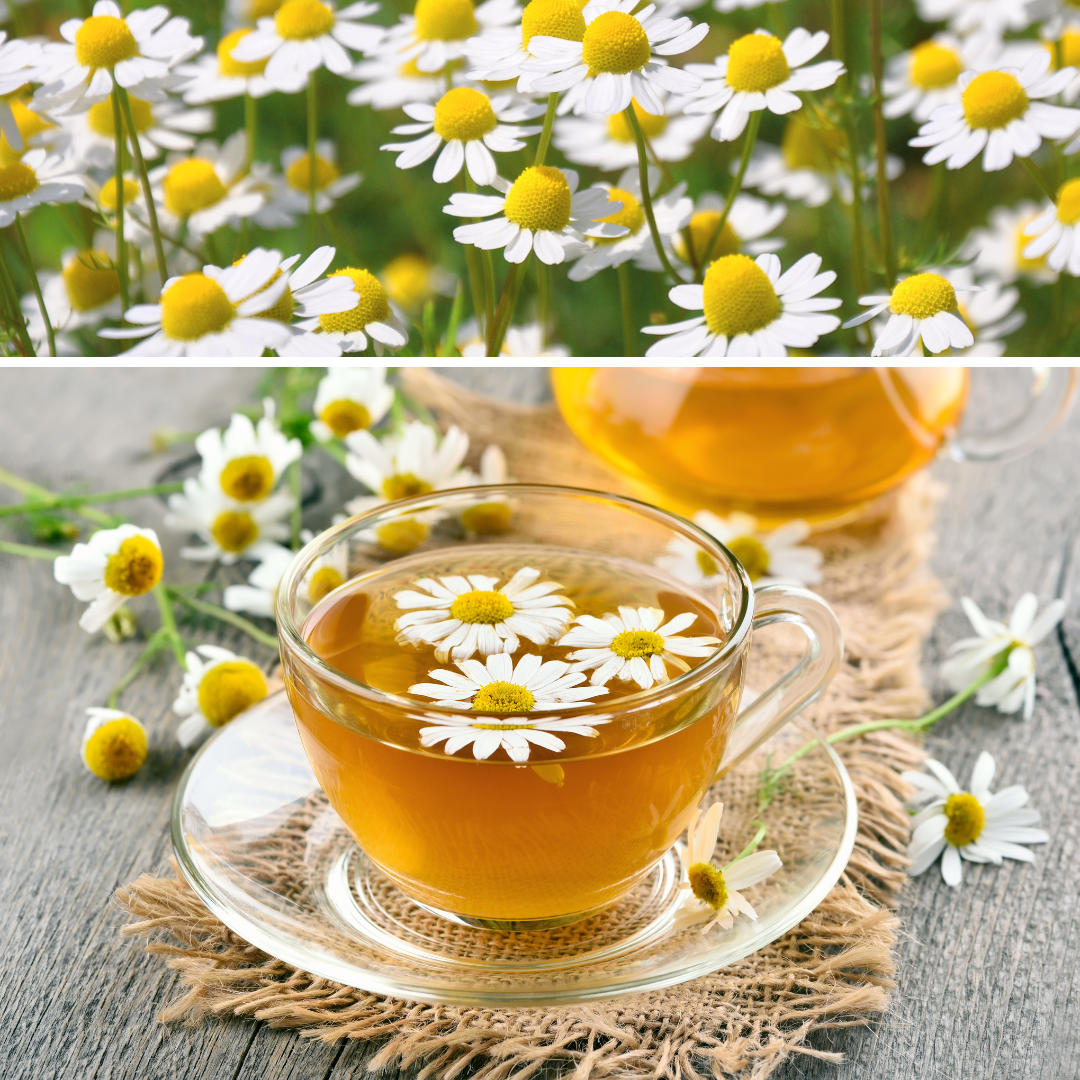
Chamomile
“Chamomile can grow indoors year-round or during cold winters. It’s an easy-to-grow herb that can thrive in a pot. Here are some tips for growing chamomile indoors:
-
Light
“Place the pot near a south- or west-facing window that gets 4 to 6 hours of bright sunlight per day. Chamomile needs light to germinate, so you can cover the seeds with a thin layer of vermiculite or leave them uncovered.
-
Temperature
“Chamomile seeds germinate best at a temperature of 68° F (20° C). If your house is cold, you can place them on a heating mat or near a radiator.
-
Watering
“Keep the soil moist but not overly wet. Watering once per week should be enough.
-
Potting mix
“Use a light, organic potting mix and add compost for extra nutrients.
-
Transplanting
“When chamomile seedlings are large enough to handle, move them into individual pots. After all risk of frost has passed, you can transplant the young plants outside in late spring or early summer.
“You can also grow chamomile from tea bags by dumping the contents into some soil, watering it well, covering it to keep it moist, and putting it under some light.” Google ai
German Chamomile Seed
Image Credit: Burpee
“The Mississippi State University Extension Service says that German chamomile is one of many herbs that can grow successfully in Mississippi’s climate. German chamomile is native to southern and western Europe, as well as northern and western Asia. It’s also naturalized in many other parts of the world, including the US, where it’s been found along the Mississippi River drainage.
“German chamomile grows best in full sun or light shade, and can grow up to 3 feet tall. It can grow in any type of soil, but it should be avoided in rich, heavy, and damp soils. Chamomile needs frequent irrigation to maintain an optimum moisture level because its roots are shallow.
“German chamomile is an annual plant that reseeds in your garden. It can be propagated by seeds, which should be sown on cultivated soil at a rate of approximately 5,000 seeds per 100 square feet. The seeds should be covered lightly with peat moss and kept moist until germination, which takes about 7–10 days.
German Chamomile Habitat & Cultivation
“German chamomile grows in much of Europe and other temperate regions. The seeds are sown in spring or autumn and the flower heads are picked in full bloom, in summer.
Key Actions
■ Anti-inflammatory
■ Antiallergenic
■ Antispasmodic
■ Relaxant
■ Carminative Research
■ Trials in Germany A cream made from German chamomile was tested in 1987 for its ability to heal wounds. The results produced were very positive. In 1993, another trial using German chamomile and four other herbs showed them to be most effective at easing infantile colic.
■ Premenstrual syndrome An Iranian clinical trial compared chamomile with mefenamic acid for relief of premenstrual syndrome symptoms. Both were found effective in relieving the physical symptoms of premenstrual syndrome, but chamomile proved better in relieving emotional symptoms.
Traditional & Current Uses
■ Digestive problems German chamomile has been taken for digestive problems since at least the 1st century ce. Gentle and efficacious, it is very suitable for children. The herb is valuable for pain, indigestion, acidity, gastritis, gas, bloating, and colic. It is also used for hiatal hernia, peptic ulcer, Crohn’s disease, and irritable bowel syndrome.
■ Relaxation German chamomile, which contains spiroether, a strong antispasmodic, eases tense muscles and period pain. It is known that women in ancient Rome commonly took chamomile to relieve menstrual cramps. Chamomile flowers also reduce irritability and promote sleep—especially helpful for children.
■ Irritation The herb is useful for hay fever and asthma. On steam distillation, the pro azulenes produce chamazulene, which is markedly antiallergenic. Externally, it can be applied to sore, itchy skin, sore nipples, and eczema. It also relieves eyestrain. A poultice can be applied to sore breasts.
“German chamomile is a useful herb to cultivate for home use.
“Parts Used Key Preparations & Their Uses Dried flower heads Fresh flower heads German chamomile’s aromatic, slightly bitter taste, reminiscent of apples, is familiar to herbal tea drinkers. The herb’s varied medicinal uses, however, are not as well known. It is an excellent herb for many digestive disorders and for nervous tension and irritability. Externally, it is used for sore skin and eczema. Roman chamomile … is a close relation, used in a similar way.”Encyclopedia of Herbal Medicine, pg. 77.
Cinnamon
“One of the world’s most important spices, cinnamon is an ancient medicine, first mentioned in the Jewish religious text, the Torah. The bark has a long history of use in India and Southeast Asia, and is thought to have arrived in Egypt around 2000 bce, reaching Europe around 500 bce.
“Traditionally used to treat colds, flu, and digestive problems, cinnamon is now commonly taken to help stabilize blood-sugar levels.
Habitat & Cultivation
“Cinnamon (C. zeylanicum) is native to India and Sri Lanka, growing in tropical forests to an altitude of 1,600 ft (500 m). It is widely cultivated throughout tropical regions, especially in the Philippines and the Caribbean. The tree is propagated from cuttings and every second year, the young trees are cut back to just above ground level. The bark is stripped from the shoots that emerge the following year, and the inner layer is set out to dry in the sun, forming the characteristic quills.
Key Actions
■ Warming stimulant
■ Carminative
■ Antidiabetic
■ Antimicrobial
■ Antifungal
Research ■
“Metabolic syndrome Research suggests the bark helps to prevent and treat type 2 (late-onset) diabetes, increasing cells’ ability to respond to insulin and aiding the stabilization of blood-sugar levels. It also helps to reduce high blood pressure and may slightly lower cholesterol, so it could be key to treating metabolic syndrome.
Other uses
“Similarities of the phenolic procyanidins to grape seed… and green tea …indicates cinnamon is strongly antioxidant and aids healthy circulation.
The essential oil is sedative, analgesic, and has marked antimicrobial and antifungal activity. There are hints that cinnamon helps brain health.
Traditional & Current Uses
■ Ancient warming remedy Cinnamon has always been used as a warming herb for “cold” conditions, often in combination with ginger ….
“The bark stimulates circulation and blood flow to the extremities. It has long been used for flu symptoms, and makes an excellent mouthwash for conditions such as oral thrush. …
“Cinnamon is now widely cultivated as a spice and a medicine, but, traditionally, only bark from wild trees was used medicinally.
Cautions
“Occasionally causes allergic reaction; excessive doses may cause low blood sugar; do not take essential oil internally.
■ Convalescence
“Cinnamon is a gentle-acting herb that helps to support both digestion and circulation. It is used specifically in the treatment of debility and in convalescence.
■ Gynecological remedy
“It can help relieve period cramps and might have a normalizing effect on menstrual bleeding—controlling heavy bleeding but stimulating flow where it is light.
“It is valuable in the treatment of PCOS (polycystic ovary syndrome) as it helps to reduce insulin levels and stabilize estrogen levels.
■ Insulin resistance
“It has a distinct role to play in promoting better blood glucose levels and in preventing insulin resistance—the impaired uptake of sugar by cells that is a warning sign of diabetes. One suggestion, as part of a wider regimen for diabetes and metabolic syndrome, is to take 3 tsp of cinnamon powder a day for 4 months.
Gastrointestinal problems
“It has always been used as a warming and soothing remedy for digestion, aiding in nausea, indigestion, and flatulence, as well as colic and diarrhea. Its antifungal activity means that it can be of value in gut dysbiosis (disordered gut bacteria).” Encyclopedia of Herbal Medicine, pg. 81.

Clove
Habitat & Cultivation
“Originally from the Molucca Islands (Indonesia) and the southern Philippines, cloves are now grown extensively in Tanzania and Madagascar, and to a lesser extent in the West Indies and Brazil. The tree is grown from seed in spring or from semi-ripe cuttings in summer. Twice a year, the unopened flower buds are picked as they develop, and then sun-dried.
Key Actions
■ Antiseptic
■ Carminative
■ Stimulant
■ Analgesic
■ Prevents vomiting
■ Antispasmodic
■ Eliminates parasites
Research
■ Volatile oil
“Argentinian research in 1994 showed clove’s volatile oil to be strongly antibacterial. Eugenol (a phenol) is the largest and most important component of the volatile oil. It is strongly anesthetic and antiseptic, and therefore useful in pain relief for toothache, and as an antiseptic for many conditions.
■ Acetyl eugenol
“Acetyl eugenol, another component of the volatile oil, has been shown to be strongly antispasmodic.
Traditional & Current Uses
■ Ancient all-purpose remedy Cloves have been used in Southeast Asia for thousands of years and were regarded as a panacea for almost all ills.
■ Antiseptic The antiseptic property of cloves makes them useful for treating certain viral conditions. In tropical Asia, they have often been given to treat infections such as malaria, cholera, and tuberculosis, and parasites such as scabies.
■ Antispasmodic Digestive discomfort, such as gas, colic, and abdominal bloating, can be relieved with cloves. Their antispasmodic property also eases coughs and, applied topically, relieves muscle spasms.
■ Mind & body stimulant Cloves are a stimulant, both to the mind (improving memory) and to the body as a whole, and have been used as an aphrodisiac in India and in the West. The herb has also been used to prepare for childbirth. It helps stimulate and strengthen uterine muscle contractions in labor. Clove tree An evergreen, pyramid-shaped tree growing to 49 ft (15 m). The tree is strongly aromatic.
■ Additional uses Besides all their other uses, cloves can be used to treat acne, skin ulcers, sores, and styes. They also make a potent mosquito and clothes moth repellent. Oranges that had been studded with cloves were used in the Moluccas as insect repellents.
■ Western herbalism Despite the bewildering variety of their therapeutic uses, cloves are underrated in the Cloves are pink when unripe, but later turn brown when they are dried outside in the sun. Parts Used Key Preparations & Their Uses Flower buds are picked unopened and dried for use in infusions or powders and for oil extraction. Dried flower buds (cloves) Fresh flower buds West. They are used regularly only in mouthwashes, and for their local anesthetic effect, for example in relieving toothache. Chevallier, Andrew. Encyclopedia of Herbal Medicine, pg. 97.
Comfrey
“Comfrey’s names testify to its traditional use in mending broken bones. “Comfrey” is a corruption of con firma, meaning the bone is ‘made firm,’ Symphytum is derived from the Greek for ‘to unite,’ and knitbone speaks for itself. Comfrey is also a wound herb. K’Eogh in his Irish Herbal (1735) wrote that it ‘heals all inward wounds and ruptures.’ Today, it is still highly regarded for its healing properties.
Habitat & Cultivation
“An indigenous European plant, comfrey grows in all temperate regions of the world, including western Asia, North America, and Australia. It thrives in moist, marshy places. It can be grown from seed in spring or by root division in autumn, and the leaves and flowering tops are harvested in summer. The root is unearthed in autumn.
Key Actions
■ Demulcent
■ Astringent
■ Anti-inflammatory
■ Heals wounds and bones
Research
■ Active constituents
“Allantoin is a cell-proliferant that stimulates the repair of damaged tissue. The herb’s anti-inflammatory activity is partly due to the presence of rosmarinic acid and phenolic acids.
■ Pyrrolizidine alkaloids
“Research shows that, as isolated substances, certain pyrrolizidine alkaloids can be highly toxic to the liver. It is still unclear whether they are toxic in the context of the whole plant, as they are only present in minute amounts, often being completely absent from samples of dried aerial parts. The highest concentration is in the root, which should not be used internally. Skin applications, as well as the aerial parts of the plant, are considered safe.
■ Clinical research In
“Germany and elsewhere in Europe, comfrey is widely used for sprains, bruises, and sports injuries. Research, mostly in Germany, endorses the traditional knowledge of comfrey’s woundhealing ability. In a 2007 study, physicians rated the efficacy of a comfrey leaf cream in healing abrasions. The doctors rated its effectiveness as good or very good in 93% of cases, and complete healing took 4 days with comfrey and 7 days with placebo. Other studies indicate comfrey’s value in promoting tissue repair and as an anti-inflammatory in conditions such as sprained ankle, osteoarthritis, and lower back pain.
Traditional & Current Uses
■ Injuries
“Comfrey’s ability to promote the healing of bruises,sprains, fractures, and broken bones has been known for thousands of years. It encourages ligaments and bones to knit together firmly. A comfrey compress applied immediately to a sprained ankle can significantly reduce the severity of the injury. The combination of tannins and mucilage helps to soothe bruises and grazes.
■ Other uses
“Comfrey preparations have many other uses and can be Comfrey was known to the Greek physician Dioscorides in the 1st century ce, who wrote about it in his Materia Medica.
Parts Used Key
“Preparations & Their Uses applied to heal problems such as insect bites, scars, skin inflammation, acne, and mastitis. Chevallier, Andrew. Encyclopedia of Herbal Medicine, pg. 138.
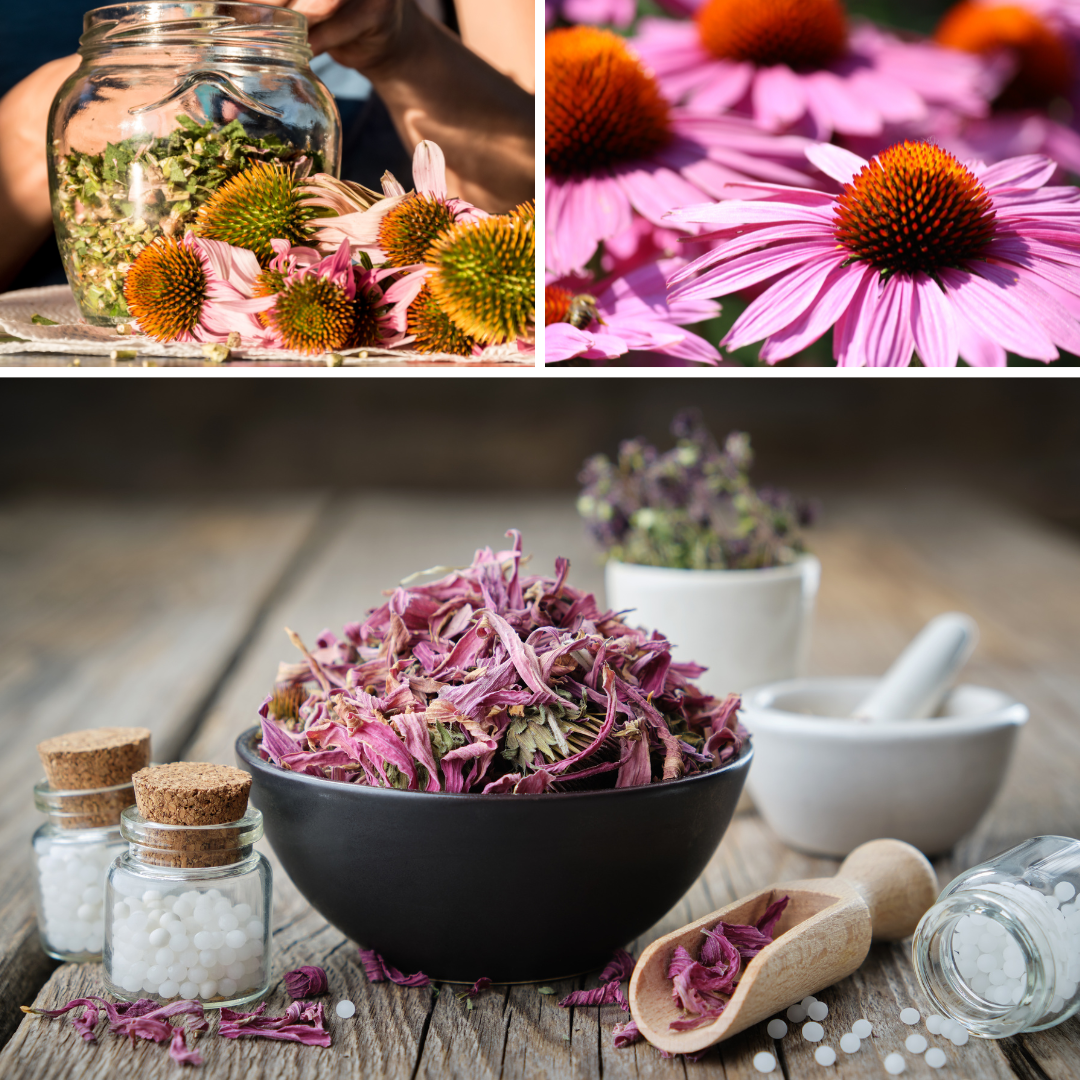
Echinacea
Echinacea, Purple Coneflower Echinacea
“A perennial growing to 4 ft (1.2 m) with upright stems and pink to purple daisy-like flowers. Echinacea is a name derived from the Greek word for hedgehog and was inspired by the appearance of the flower’s central cone.
Habitat & Cultivation
“Native to central parts of the U.S., three species of echinacea are used medicinally: E. angustifolia, E. purpurea, and E. pallida. All are threatened in the wild and only commercially grown plants should be used. E. purpurea is cultivated widely in the U.S. and Europe. Grown from seed in spring or by root division in winter, it thrives in rich, sandy soil. The leaves and flowers are gathered during flowering; the roots of 4-year-old plants are lifted in autumn.
Key Actions
■ Immune modulator
■ Antimicrobial
■ Anti-inflammatory
■ Detoxifying
■ Heals wounds
■ stimulates saliva
Research
■ Immune system
“Clinical research into echinacea has confirmed that it increases the number of white blood cells and their strength of action, although its precise mode of action on immune function is not well understood. The polysaccharides inhibit the ability of viruses to take over cells, while the alkylamides are antibacterial and antifungal. Research supports the use of echinacea to prevent colds and respiratory infections resulting from air travel. Not all clinical trials have found positive effects, possibly because in some cases too low a dose of echinacea was used. Traditional & Current uses
■ Native American medicine
“The Comanche used echinacea as a remedy for toothache and sore throats and the Sioux took it for rabies, snake bite, and septic conditions.
■ Western uses
“Echinacea is a key remedy in Western herbal medicine, and is used to treat many health problems, notably viral and fungal infections, and skin infections such as acne and boils. It makes an excellent gargle for throat infections, and is typically prescribed by herbalists wherever the immune system is underperforming. ■ Allergies The herb is a helpful remedy for treating allergies such as asthma.
“a key medicinal herb, echinacea has a tonic action on the body’s immune system. Known by 19th-century Americans as Indian Snakeroot (due to its ability to treat snake bites), the herb has a potent ability to counter infection, especially viral and bacterial, and to aid the clearance of toxins from the body. It is commonly taken as a preventative and treatment for upper respiratory infections such as colds, flu, and coughs.” Chevallier, Andrew. Encyclopedia of Herbal Medicine, pg. 92.
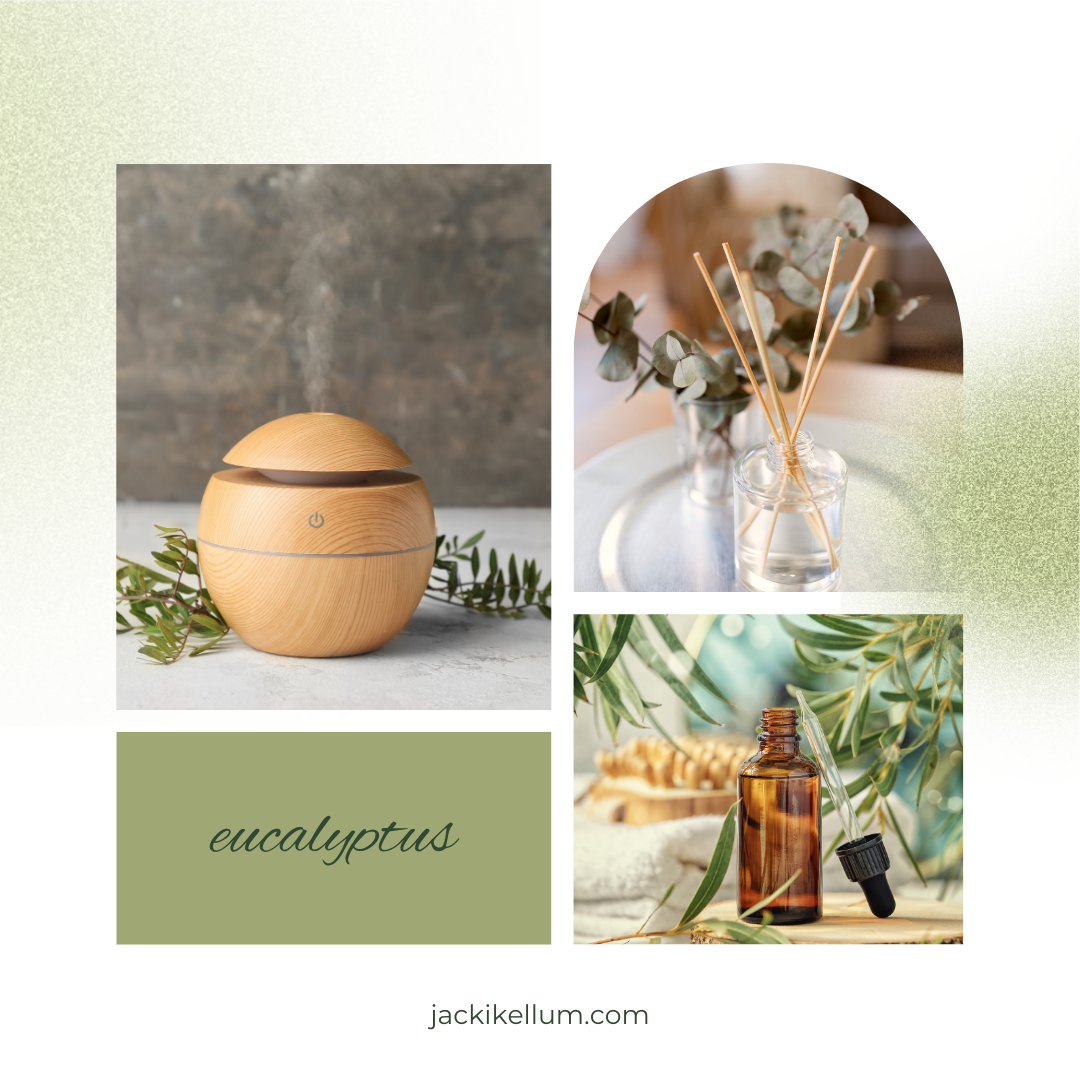
Eucalyptus
“Eucalyptus, a traditional Aboriginal remedy, is a powerful antiseptic used all over the world for relieving coughs and colds, sore throats, and other infections. It is warming and stimulating, and for many people its scent conjures up days spent in bed during childhood with eucalyptus and other oils smothered on the chest. Eucalpytus is a common ingredient in many over-the-counter cold remedies.
Key Actions
■ Antiseptic
■ Analgesic
■ Expectorant
■ Stimulates local blood flow
■ Insect repellent Research
■ Essential oil
“Extensive research into eucalyptus essential oil during the last 50 years has shown it to have a marked antiseptic action and the ability to dilate the bronchioles (small airways) of the lungs. The action of the essential oil as a whole is stronger than that of its main constituent, cineole.
Traditional & Current Uses
■ Infections
“Eucalyptus is a traditional Aboriginal remedy for infections and fevers. It is now used throughout the world for these ailments.
■ Antiseptic
“The herb is an antiseptic and is very helpful for colds, flu, and sore throats. ■ Expectorant Eucalyptus is a strong expectorant, suitable for chest infections, including bronchitis and pneumonia.
■ Warming
“The diluted essential oil, applied to the skin as a chest or sinus rub, has a warming and slightly anesthetic effect, helping to relieve respiratory infections. The same effect occurs when the infusion or tincture is used as a gargle.
■ Pain relief
“Diluted essential oil applied to the affected area can help relieve rheumatic joints characterized by aching pains and stiffness, as well as neuralgia and some bacterial skin infections.” Chevallier, Andrew. Encyclopedia of Herbal Medicine, pg. 96.
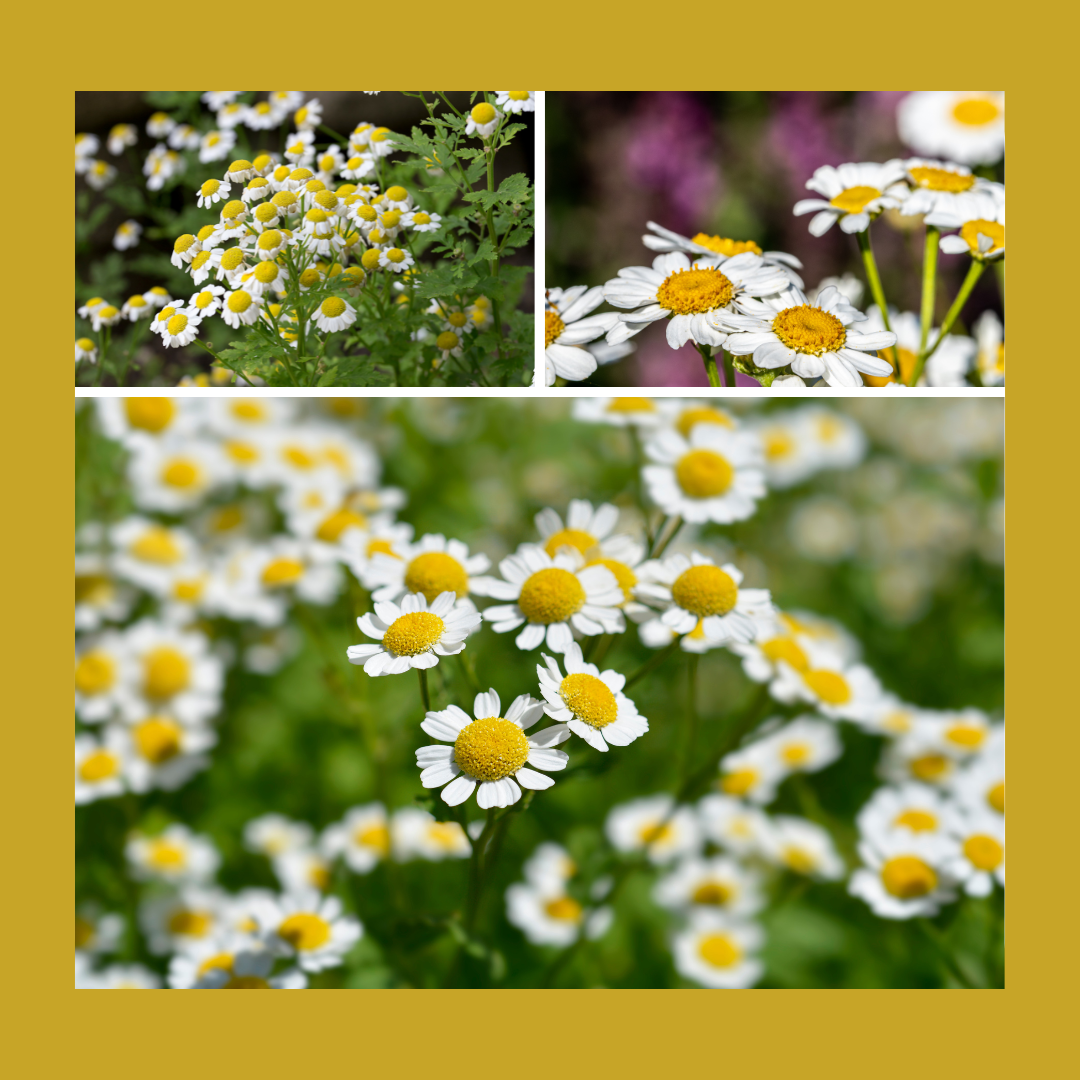
Feverfew
“Feverfew’s main traditional use was as a woman’s herb. Nicholas Culpeper in The English Physitian (1652) sings its praises as “a general strengthener of [the] womb … it cleanseth the womb, expelleth the after-birth and doth the woman all the good she can desire of an herb.” Feverfew is now used principally as a treatment for migraine, but has also long been thought of as an herb for arthritis and rheumatis.
“Feverfew has daisylike flowers that bloom all summer.
Habitat & Cultivation
“Originally from southeastern Europe, feverfew is now common throughout Europe, Australia, and North America. It can be propagated from seed or cuttings, and prefers well-drained soil and sun. The leaves are picked as required and the aerial parts as a whole are harvested in summer when the plant is in flower
Related Species
“Feverfew is a close relative of tansy and the chrysanthemum and chamomile species
.Key Actions
■ Anti-inflammatory
■ Analgesic
■ Reduces fever
■ Antirheumatic
■ Promotes menstrual flow
Research
■ Migraine
“When, in 1973, the wife of a Welsh doctor ended her 50- year history of migraine with a course of feverfew, a detailed scientific investigation got underway. In clinical trials in Britain during the 1980s the herb was shown to be an effective remedy for migraine. Further clinical trials across Europe, including one in 2006 that combined feverfew and willow bark (Salix alba, p. 129), attest to feverfew’s ability to treat migraine. The trials indicate feverfew may need to be taken long term (for 6 months or more) for full effect.
■ Rheumatoid arthritis F
“everfew’s effectiveness in the treatment of rheumatoid arthritis is being investigated. Traditional & Current Uses
■ Fevers
“As its name implies, feverfew may be used to lower temperature and cool the body.
■ Gynecological uses
“The herb has been used since Roman times to induce menstruation. It is also given in childbirth to aid expulsion of the placenta.
■ Migraine & headaches
“In small quantities, feverfew is now used as a preventative for migraine. It has to be taken regularly, and at the first signs of an attack. It is useful for migraine associated with menstruation, and for headaches.
■ Arthritis remedy
“The herb can help arthritic and rheumatic pain, especially with other herbs
Chevallier, Andrew. Encyclopedia of Herbal Medicine, pg. 140.
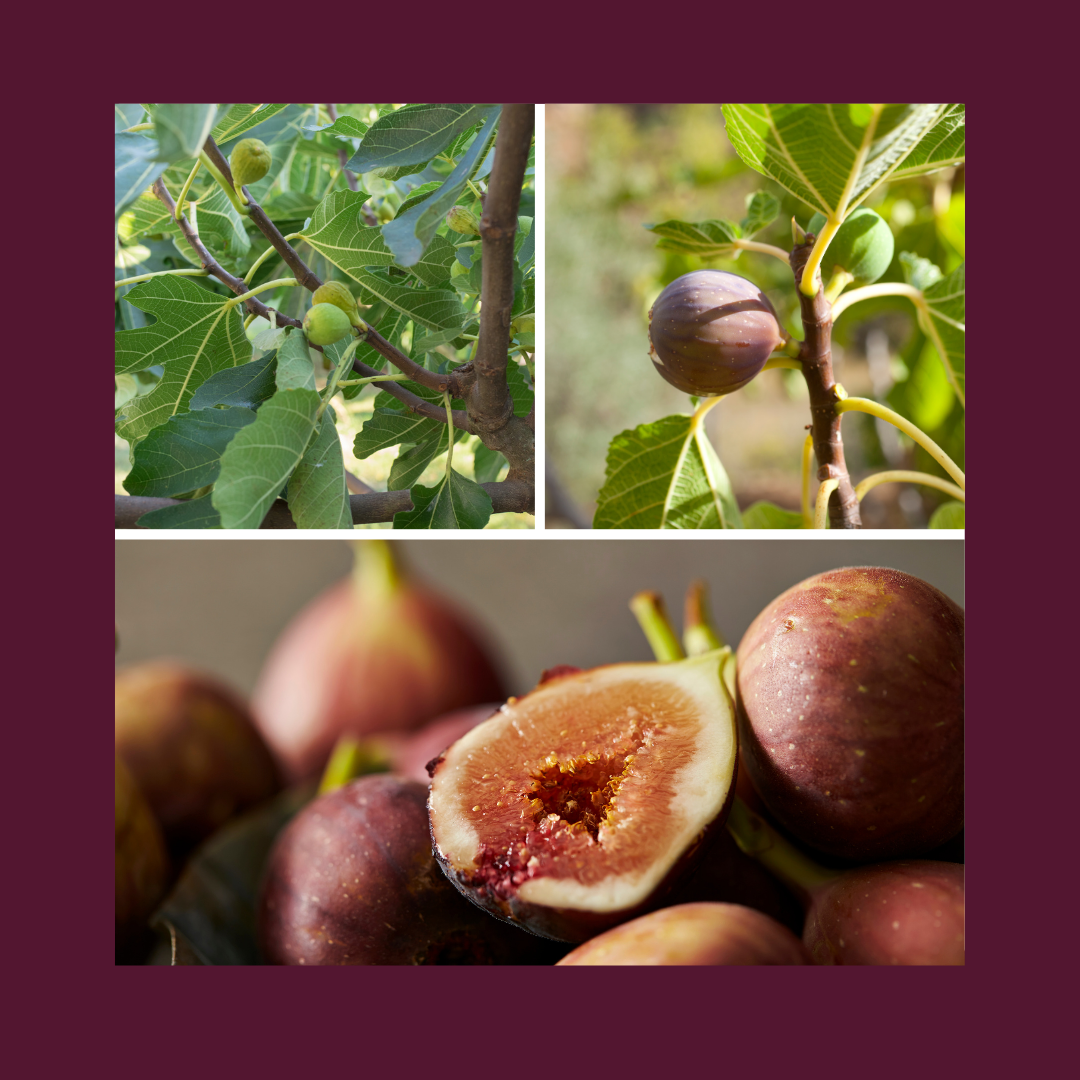
Fig
Description
“Deciduous tree growing to 13 ft (4 m). Has large leaves and fleshy receptacles that ripen into purple-brown, pear-shaped fruit.Fig’s pulpy flesh is emollient and soothing to inflamed skin.
Habitat & Cultivation
“Native to western Asia, fig now grows wild and is cultivated in many temperate and subtropical regions. Fruit is harvested in summer.
Parts Used Fruit, late
History & Folklore
“The fig leaf was used by Adam and Eve to hide their nakedness in the Garden of Eden. There are many other references to the plant in the Old Testament, mainly to the sweetness of the fruit and to its use as a medicine. Spartan athletes in Ancient Greece were said to eat figs in order to improve their performance.
Medicinal Actions & Uses
“The fruit sugars within the fig (especially the dried fruit) have a pronounced but gentle laxative effect; syrup of figs is still a remedy for mild constipation. The fruit’s emollient pulp helps relieve pain and inflammation, and it has been used to treat tumors, swellings, and gum abscesses—the fruit often being roasted before application. Figs are also mildly expectorant and, when used with herbs such as elecampane (Inula helenium, p. 107), are helpful in treating dry and irritable coughs and bronchitis.” Chevallier, Andrew. Encyclopedia of Herbal Medicine, pgs. 211=212.
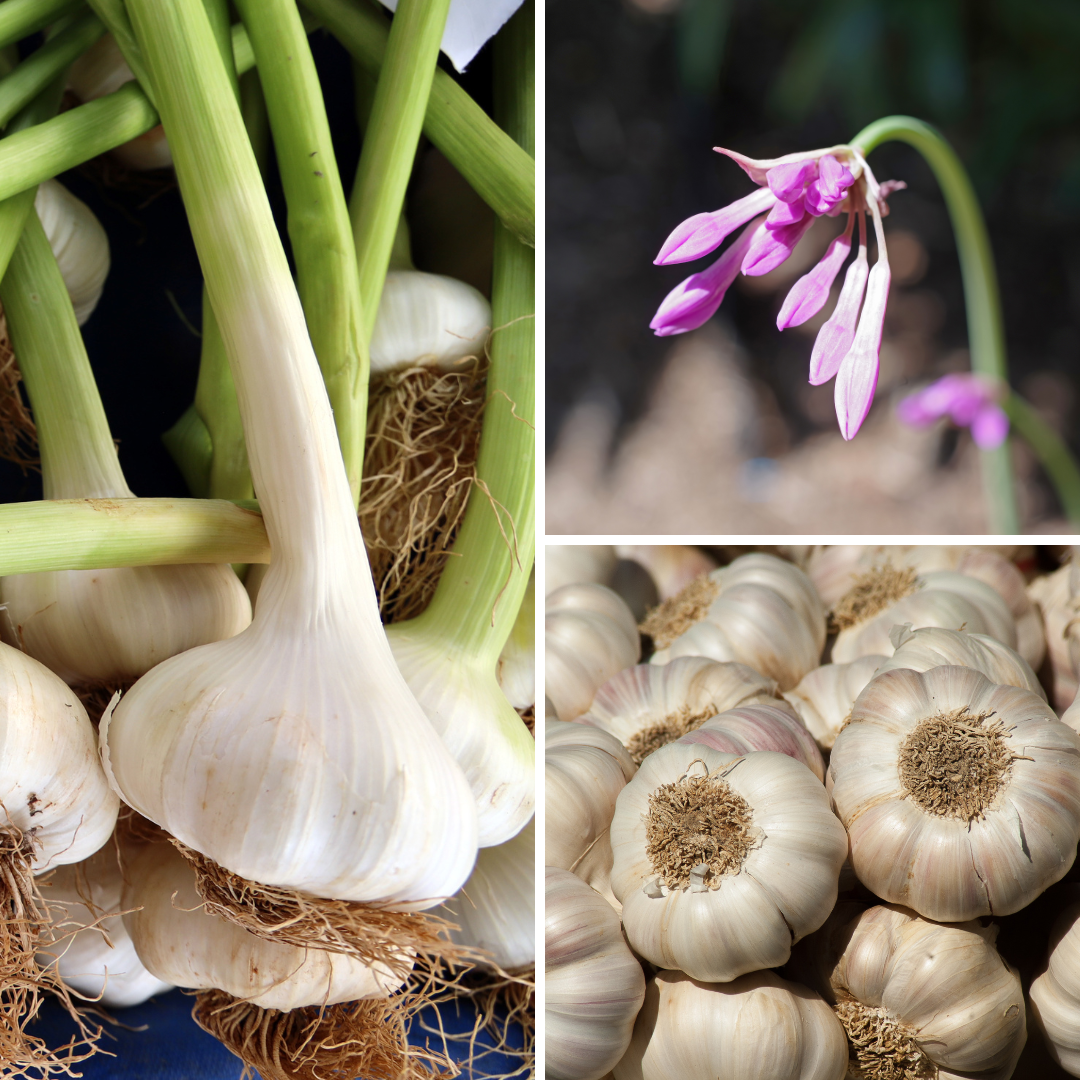
Garlic
- “Garlic Known for its pungent odor and taste, garlic is an ideal herbal medicine, being completely safe for home use and a powerful treatment for a host of health problems. It counters many infections, including those of the nose, throat, and chest. It also reduces cholesterol, helps circulatory disorders, such as high blood pressure, and lowers blood-sugar levels, making it a useful dietary addition in type 2 diabetes.
Habitat & Cultivation
“Originally from central Asia, garlic is now grown world wide. It is grown by dividing the bulb and is harvested late the following summer.
Key Constituents
■ Volatile oil (alliin, alliinase, allicin)
■ Scordinins
■ Selenium
■ Vitamins A, B, C, and E
Key Actions
■ Antibiotic
■ Expectorant
■ Increases sweating
■ Lowers blood pressure
■ Reduces blood clotting
■ Anti-diabetic
■ Expels worms
Research
■ Invaluable remedy
“Well over 1,000 research papers have been published on the medicinal effects of garlic. They show that it helps to lower raised blood fat levels, including cholesterol, to keep the blood thin and protect against blood clots, to lower raised blood pressure, to lower raised blood-sugar levels, and to have antibiotic activity.
■ Unknown action
“While it is understood that when the fresh clove is crushed, alliin is broken down by alliinase into allicin (which has strong antiseptic activity), authorities still disagree on precisely how garlic achieves its medicinal effects. Nevertheless, research indicates that it is best to crush garlic cloves, and then to wait 10 minutes before using it in food or as medicine. This allows sufficient time for allicin to form.
Traditional & Current Uses
■ Traditional remedy
“Garlic has always been esteemed for its healing powers, and before the development of antibiotics it was a treatment for all manner of infections, from tuberculosis to typhoid. It was also used to dress wounds in World War I.
■ Bronchial infections
“Garlic is an excellent remedy for all types of chest infections. It is good for colds, flu, and ear infections, and it helps to reduce mucus.
■ Digestive tract
“Digestive infections respond well to garlic. The herb can also rid the body of intestinal parasites.
■ Circulatory remedy Garlic prevents circulatory problems and strokes by keeping the blood thin. It lowers cholesterol levels and blood pressure.
“Garlic A bulbous perennial growing to 1–3 ft (30 cm–1 m), with pale pink or greenwhite flowers.
■ Other uses
“Garlic has been used to treat diverse health problems, from hay fever and asthma to an enlarged prostate and osteoarthritis. It is useful when taken alongside conventional antibiotics to help prevent side-effects such as diarrhea. Strongly antifungal, garlic can be an effective treatment in fungal skin conditions, taken internally and applied to the skin. It has anti-cancer activity and helps to protect against stomach and colon cancer. … Encyclopedia of Herbal Medicine, pg. 59.
Ginger
“Familiar as a spice and flavoring, ginger is also one of the world’s best medicines. It has been revered in Asia since the earliest times, and in medieval Europe it was thought to have derived from the Garden of Eden. Ginger’s warming and anti-inflammatory properties can bring relief to problems as varied as headache and migraine, joint pain, indigestion, motion sickness, and morning sickness. Fresh ginger has a pungent, slightly lemony taste.
Habitat & Cultivation
“Native to Asia, ginger is grown throughout the tropics. It is propagated by dividing the rootstock. Ginger flourishes in fertile soil and needs plenty of rain. The rhizome is unearthed when the plant is 10 months old. It is washed, soaked, and sometimes boiled and peeled.
Key Actions
■ Anti-inflammatory
■ Circulatory stimulant
■ Antiemetic
■ Antiviral
■ Digestive stimulant
Research
■ Digestive health
“Ginger speeds up the rate of gastric emptying and aids the absorption of nutrients from the digestive tract. By improving iron absorption, it helps to treat anemia. Clinical trials indicate that it can relieve nausea and vomiting.
■ Morning sickness
“A 2013 Australian review of clinical trials using ginger to relieve pregnancyinduced nausea and vomiting concluded that ‘The best available evidence suggests that ginger is a safe and effective treatment for PNV.’
■ Pain relief
“Several smallscale research studies have found that ginger reduces muscle pain, for example, after exercise. This is because of a potent antiinflammatory action. One study found that after 2 months of treatment, ginger was as effective in relieving menstrual cramps as mefenamic acid (an aspirin-type painkiller). A 2014 Iranian clinical trial compared the effects of ginger and sumatripan (a painkiller) in relieving migraine, and reported that the two treaments were similarly effective.
Traditional & Current Uses
■ Digestive problems
“Ginger is thought to be helpful for almost all digestive complaints. It is an excellent remedy for symptoms such as indigestion, nausea, gas, bloating, and cramps—whether taken as an infusion, juice, tincture, or powder, or with food. Its antiseptic activity makes it valuable in all gastrointestinal infections,including food poisoning.
■ Circulatory stimulant
Ginger stimulates circulation, and helps blood to flow to the surface, making it an important remedy for chilblains and poor circulation to the hands and feet. Juice squeezed from fresh ginger root can be applied to chilblains (and cold sores), bringing quick relief.
■ Respiratory conditions
“Ginger has antiviral activity and is a first-rate remedy for coughs, colds, flu, and other respiratory problems. Despite its warming properties, ginger stimulates sweating and helps to cool and control fevers.”Chevallier, Andrew. Encyclopedia of Herbal Medicine, pg. 155.

Iris
Blue Flag – Wild Iris
Description
“Perennial growing to about 3 ft (1 m). Has erect stems and long sword-shaped leaves. Each stem bears 3–5 resplendent blue to violet flowers with white-veined areas on the petals.
Habitat & Cultivation
“Blue flag is native to North America. Preferring damp and marshy areas in the wild, it is also widely cultivated as a garden plant. The rhizome is unearthed in autumn.
Part Used Rhizome.
History & Folklore
“Blue flag was one of the medicinal plants most frequently used by Native Americans. Different tribes made use of it variously as an emetic, cathartic, and diuretic, to treat wounds, and for colds, earache, and cholera. In the AngloAmerican Physiomedicalist tradition, blue flag was used as a glandular and liver remedy. Blue flag is Quebec’s provincial flower.
Medicinal Actions & Uses
“Blue flag is currently used mainly to detoxify the body. It increases urination and bile production, and has a mild laxative effect. This combination of cleansing actions makes it a useful herb for chronic skin diseases such as acne and eczema, especially where gallbladder problems or constipation contribute to the condition. Blue flag is also given for biliousness and indigestion. However, in large doses blue flag will itself cause vomiting. The traditional use of blue flag for gland problems persists. It is also believed by some to aid weight loss.
“Cautions Excessive doses cause vomiting.
“Blue flag was very widely used by Native Americans to treat wounds and sores.” Chevallier, Andrew. Encyclopedia of Herbal Medicine, pg. 223.
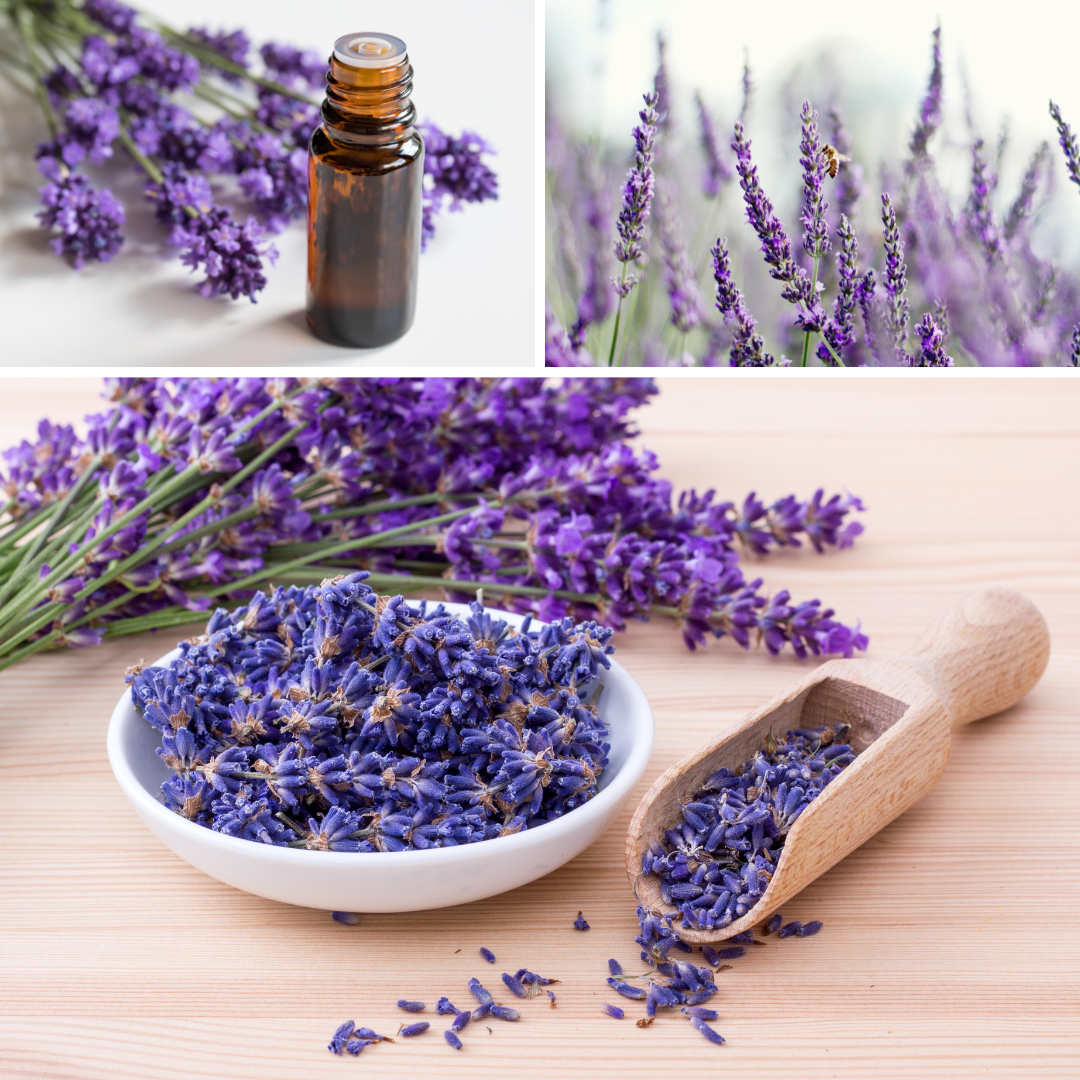
Lavender
“A perennial shrub growing to 3 ft (1 m), with spikes of violetblue flowers extending above the foliage. Lavender is widely cultivated for perfume and medicinal use.
Habitat & Cultivation
“Native to France and the western Mediterranean, lavender is cultivated worldwide for its volatile oil. It is propagated from seed or cuttings and needs a sunny position. The flowers are picked in the morning in high summer and are dried, or distilled to produce essential oil. Related Species Spike lavender (L. spica) yields more oil than L. officinalis, but of an inferior quality. L. stoechas is used as an antiseptic wash for wounds, ulcers, and sores in Spain and Portugal.
“A 2014 clinical trial found lavender oil taken internally to be more effective than both a placebo and a conventional tranquilizer in relieving generalized anxiety. It also showed antidepressant activity. Other studies have found similar benefits and tended to confirm relaxant, antidepressant, and gently sedative activity. The oil is thought to have low toxicity and significant antibacterial and antifungal activity.
■ Flowers
“Lavender flowers and oil have similar properties. Although little research has been conducted, it is likely the flowers have a significantly greater carminative and neuroprotective activity. Applied externally, flower extracts are insecticidal and rubefacient (irritant and stimulating to the local circulation).
Traditional & Current Uses
■ Nervous system
“Lavender is well known for its soothing and calming effect and is combined with other sedative herbs to relieve sleeplessness, irritability, headaches, and migraine. It also helps to alleviate depression.
■ Digestion
“Like many herbs with a significant volatile oil content, lavender soothes indigestion and colic, and relieves gas and bloating.
■ Asthma
“Lavender’s relaxing effect makes it helpful for some types of asthma, especially where excessive nervousness is a feature.
■ Essential oil
“The oil is an invaluable first aid remedy. It is strongly antiseptic, helping to heal burns, wounds, and sores. Rubbed onto insect stings, it relieves pain and inflammation, and can be used to treat scabies and head lice. Massaging a few drops on the temples eases headaches, and five drops added to a bath at night relieves muscle tension, tones the nervous system, and encourages sleep.
Parts Used
“Key Preparations & Their Uses Flowers are harvested toward the end of flowering, when the petals have begun to fade. Dried flowers Fresh flowers
Tincture
“For insomnia, take 1 ⁄2 –1 tsp with water at night. Self-help Uses
“For headaches, combine 20 drops with 1 tbsp carrier oil and apply
“Essential oil Apply undiluted to insect stings. Infusion (to make, p. 291) is a calming remedy for digestive problems. For indigestion, take 1 ⁄3 cup (75 ml) twice a day
“(Lavender is an important relaxing herb, but it is better known for its sweet-scented aroma than for its medicinal properties. It became popular as a medicine during the late Middle Ages, and in 1620 it was one of the medicinal herbs taken to the New World by the Pilgrims. It was described by the herbalist John Parkinson (1640) as being of ‘especiall good use for all griefes and paines of the head and brain.'” Chevallier, Andrew. Encyclopedia of Herbal Medicine, pg. 108.

Lemon
“Lemon – Despite its acid content, once digested, lemon has an alkaline effect within the body, making it useful in rheumatic conditions where acidity is a contributory factor. The volatile oil is antiseptic and antibacterial. The bioflavonoids are antioxidant and strengthen the inner lining of blood vessels, especially veins and capillaries, and help counter varicose veins and easy bruising.
“■ Preventative – Lemon is a valuable preventative medicine. Its antiseptic and cleansing actions make it useful for those prone to arteriosclerosis, and to infections and fevers (especially of the stomach, liver, and intestines). Its ability to strengthen blood vessel walls helps prevent circulatory disorders and bleeding gums. Lemon is also useful as a general tonic for many chronic illnesses. Above all, it is a food that helps maintain general good health.
“■ Strengthening vein walls The whole fruit, especially the pith, treats arteriosclerosis, weak capillaries, and varicose veins.
“■ Juice Lemon juice is good for colds, flu, and chest infections. It stimulates liver detoxification, improves the appetite, and helps ease stomach acidity, ulcers, arthritis, gout, and rheumatism. As a gargle, lemon juice is helpful for sore throats, gingivitis, and mouth ulcers. Externally, lemon juice can be applied directly to acne, athlete’s foot, chilblains, insect stings, ringworm, sunburn, and warts. …
“Remedy For colds, combine 1 tbsp lemon juice with 21/2 tbsp hot water, a crushed garlic clove, and a pinch of cinnamon. Drink up to 3 times a day. Fruit and peel improve the circulation and increase resistance to infection. Pith and peel contain volatile oil and most of the bioflavonoids …
“A familiar food as well as a remedy, it has a high vitamin C content that helps improve resistance to infection, making it valuable for colds and flu.” Chevallier, Andrew. Encyclopedia of Herbal Medicine, pg. 82.
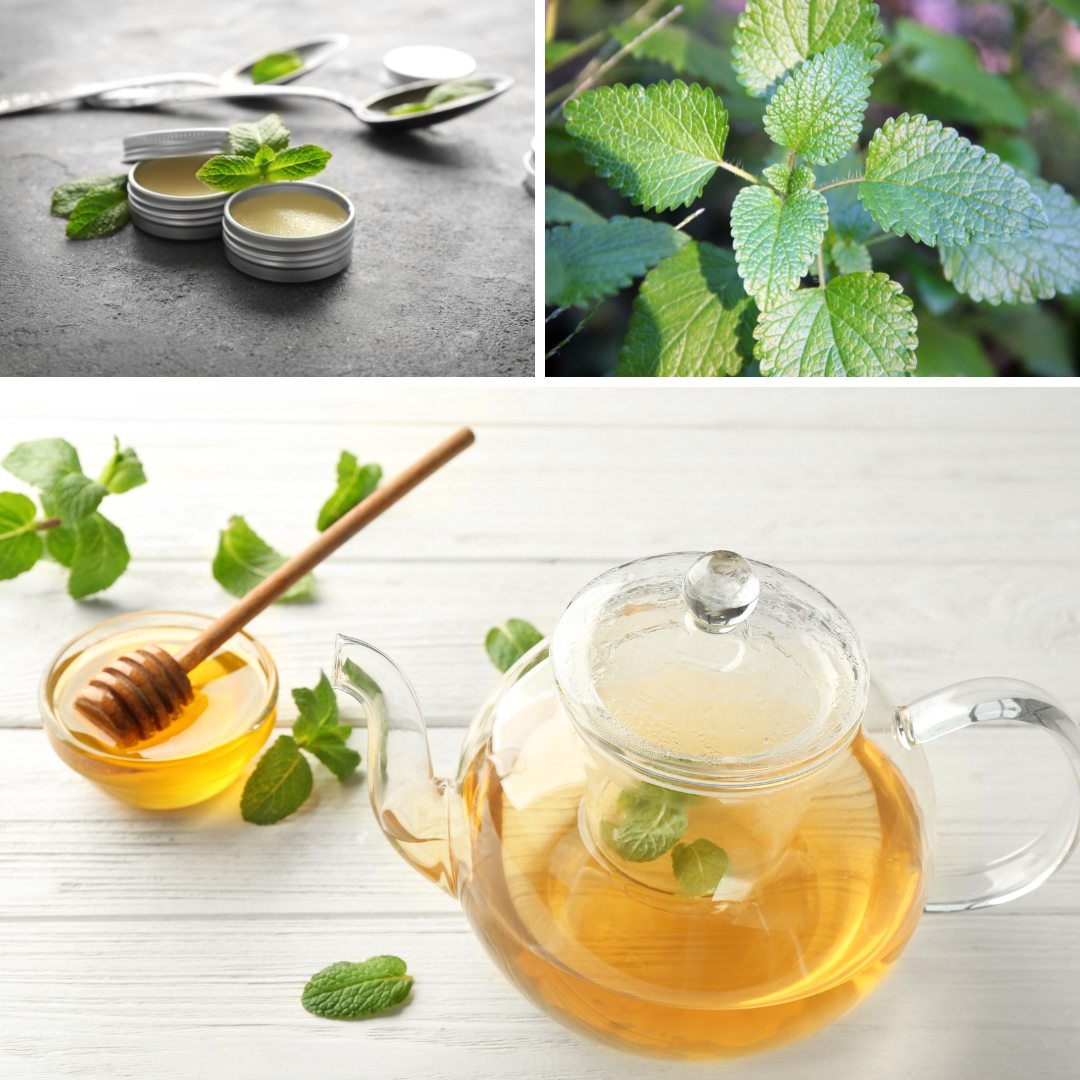
Lemon Balm, Melissa
“In writing that ‘Balm is sovereign for the brain, strengthening the memory and powerfully chasing away melancholy,’ John Evelyn (1620–1706) neatly summarized lemon balm’s long tradition as a tonic remedy that raises the spirits and comforts the heart. Today, this sweet-smelling herb is still widely valued for its calming properties, and new research shows that it can help significantly in the treatment of cold sores.
Habitat & Cultivation
“Native to southern Europe, western Asia, and northern Africa, lemon balm now grows throughout the world. The plant is propagated from seed or cuttings in spring. The aerial parts are picked from early summer onward and are best harvested just before the flowers open, when the concentration of volatile oil is at its highest.
Key Actions
■ Relaxant
■ Antispasmodic
■ Increases sweating
■ Carminative
■ Antiviral
■ Nerve tonic
■ Volatile oil
Research
“German research has shown that the volatile oil, and in particular citral and citronellal, calm the central nervous system. The oil is also strongly antispasmodic.
■ Polyphenols
“Polyphenols are antiviral. In particular, they combat the herpes simplex virus, which produces cold sores. In one research study, the average healing time of cold sores was halved to about 5 days and the timebetween outbreaks doubled.
■ Thyroid
“Lemon balm inhibits thyroid function. [Note: People with hypothyroid disease should avoid lemon balm]
Traditional & Current Uses
■ Traditional uses
“This herb has always been taken to lift the spirits. Taken regularly, it was believed to encourage longevity. Other traditional uses include healing wounds, relieving palpitations and relaxing the heart, and treating toothache.
■ Modern relaxing tonic
“Lemon balm is a relaxing tonic for anxiety, mild depression, restlessness, and irritability. It reduces feelings of nervousness and panic and will often quiet a racing heart, being a valuable remedy for palpitations of a nervous origin. Lemon balm is also useful when too much anxiety is causing digestive problems such as indigestion, acidity, nausea, bloating, and colicky pains.
■ Cold sores
“Lemon balm relieves cold sores and reduces the chances of further outbreaks.
■ Hormonal herb
“Following the discovery of its antithyroid effect, the herb is given to people with an overactive thyroid.” Chevallier, Andrew. Encyclopedia of Herbal Medicine, pg. 113

Marshmallow
Description
“Downy perennial growing to 7 ft (2.2 m). Has thick white roots, heart-shaped leaves, and pink flowers.
Habitat & Cultivation
“Native to Europe, marshmallow is naturalized in the Americas. It prefers marshy fields and tidal zones and is cultivated for medicinal use. The aerial parts are gathered in summer as the plant begins to flower and the root is unearthed in autumn.
Parts Used
“Root, leaves, flowers.
History & Folklore
‘The philosopher Theophrastus (c. 372–286 bce) reported that marshmallow root was taken in sweet wine for coughs. Marshmallow was once a key ingredient in the sweets of the same name.
Medicinal Actions & Uses
‘Useful whenever a soothing effect is needed, marshmallow protects and soothes the mucous membranes. The root counters excess stomach acid, peptic ulceration, and gastritis. Marshmallow is also mildly laxative and beneficial for many intestinal problems, including regional ileitis, colitis, diverticulitis, and irritable bowel syndrome. The leaves treat cystitis and frequent urination. Marshmallow’s demulcent qualities bring relief to dry coughs, bronchial asthma, chronic bronchitis, and pleurisy. The flowers are applied to help soothe inflamed skin. The root is used in an ointment for boils and abscesses, and in a mouthwash for inflammation. The peeled root may be given as a chewstick to teething babies.
“Other Species Hollyhock (A. rosea) and common mallow (Malva sylvestris, p. 232) are used in a similar fashion.” Chevallier, Andrew. Encyclopedia of Herbal Medicine, pg. 165.
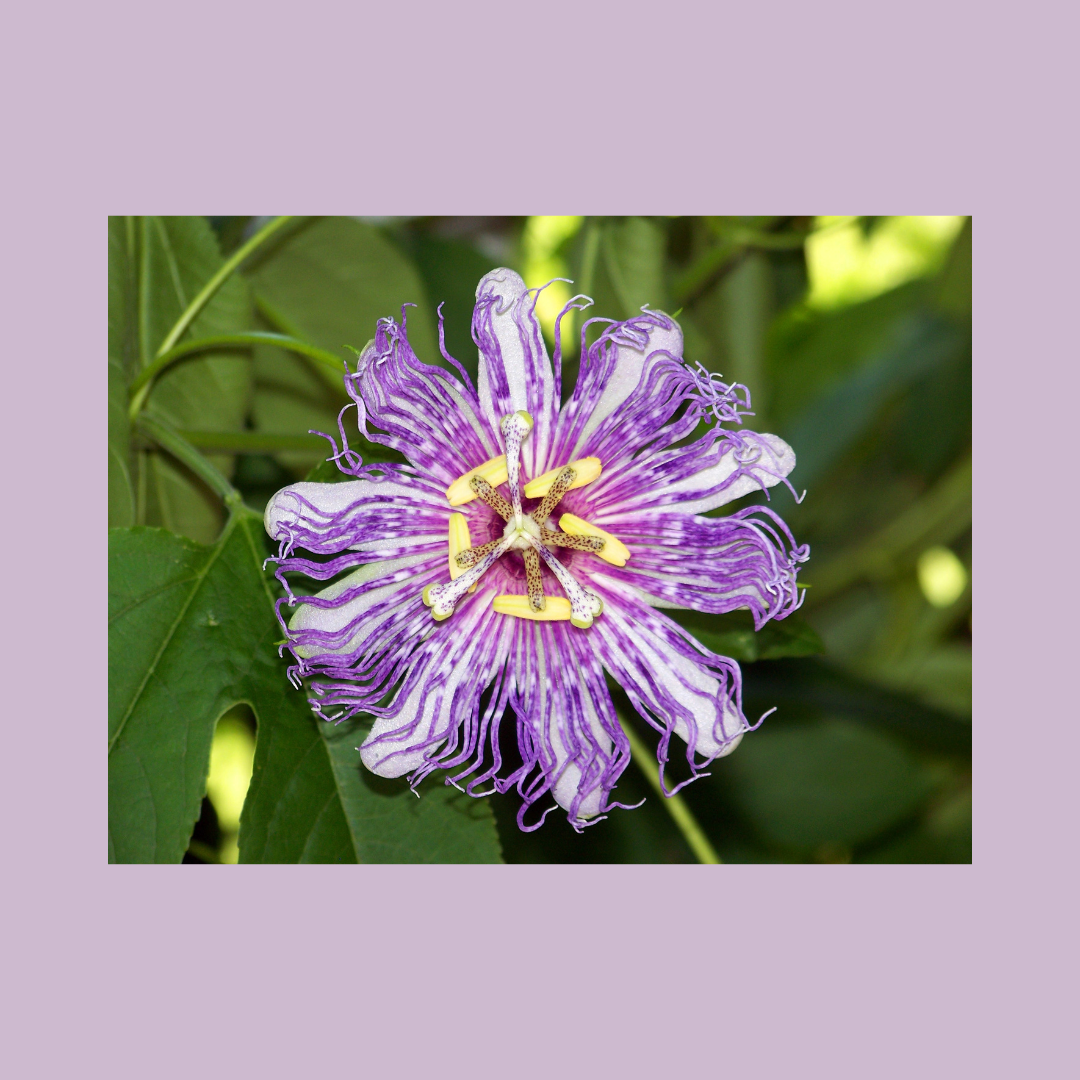
Passionflower
“Passionflower’s name comes from its beautiful flowers, thought to represent Christ’s crucifixion—5 stamens for the 5 wounds, 3 styles for the 3 nails, and white and purple-blue colors for purity and heaven. The herb has valuable sedative and tranquilizing properties and has a long use as a medicine in Central and North American herbal traditions, being taken in Mexico for insomnia, epilepsy, and hysteria.
Habitat & Cultivation
“Native to the southern U.S. (Virginia, Texas, and Tennessee) and to Central and South America, passionflower is now extensively cultivated in Europe, notably in Italy, as well as in North America. It is propagated from seed in spring and needs plenty of sun. The aerial parts are gathered when the plant is flowering or in fruit.
Related Species
“There are approximately 400 Passiflora species, some of which are populargarden plants. A number have a similar sedative action to passionflower. P. quadrangularis has been found to contain serotonin, one of the main chemical messengers within the brain.Key Actions ■ Sedative ■ Antispasmodic ■ Tranquilizing Research
■ Tranquilizing properties
“Pharmacological research shows the herb to have sedative, tranquilizing, and sleep-inducing properties. A 2001 clinical trial found that passionflower was as effective in relieving anxiety as oxazepam, a conventional tranquilizer, and had fewer reported side effects. A clinical study in 2011 found improvement in subjective sleep quality in those taking passionflower.
Traditional & Current Uses
■ Insomnia
“Passionflower is best known as a remedy for insomnia and disturbed sleep patterns, and is useful for short-term bouts of sleeplessness.
■ Gentle sedative
“This herb is widely acknowledged to be a good medicine for anxiety, tension, irritability, and insomnia. Its gentle sedative properties produce a soothing and relaxing effect, reducing nervous activity and panic, and making it a mild and non-addictive herbal tranquilizer, comparable in some ways to valerian (Valeriana officinalis, p. 148). Occasionally, it is prescribed for convulsions.
■ Pain relief Passionflower has valuable painkilling properties and is given for toothache, period pain, and headaches.
■ Tranquilizing effects
“Its ability to reduce anxiety makes passionflower valuable for many nervous states, and it is used to treat conditions as diverse as asthma, palpitations, high blood pressure, and muscle cramps. In each case, its antispasmodic and tranquilizing Passionflower was used by the Algonquin people of North America as an herbal tranquilizer.
Parts Used Key
“Preparations & Their Uses Aerial parts are picked as needed for relaxing infusions. Fresh flower Dried aerial parts Fresh aerial parts properties are the key to its usefulness, reducing the overactivity responsible for the disorder.” Chevallier, Andrew. Encyclopedia of Herbal Medicine, pg. 119.
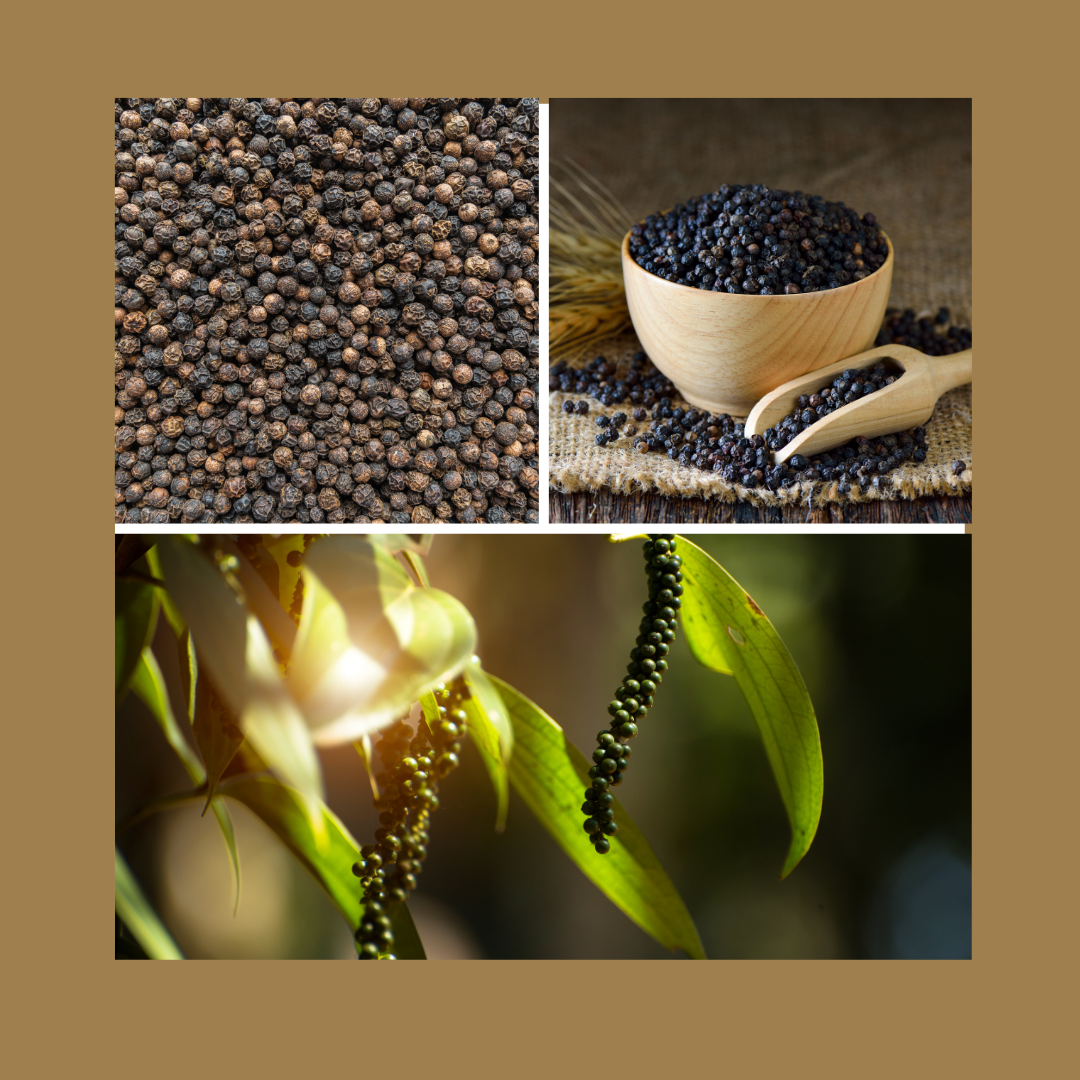
Pepper [Black]
“Description Perennial woody climber growing to about 16 ft (5 m). Has large oval leaves, spikes of small white flowers, and clusters of small round fruits, which ripen from green to red.
History & Folklore
“Cultivated as a spice and a medicine since ancient times, pepper was a vital commodity in world trade for thousands of years. Attila the Hun is reputed to have demanded 3,000 lb (1,360 kg) of pepper as ransom during his siege of the city of Rome (408 ce). Medicinal Actions & Uses The familiar sharp taste of pepper reflects the stimulant and antiseptic effect it has on the digestive tract and the circulatory system. Pepper is commonly taken to warm the body, or to improve digestive function in cases of nausea, stomachache, flatulence, bloating, constipation, or lack of appetite. The essential oil eases rheumatic pain and toothache. It is antiseptic and antibacterial, and reduces fever.
Research
“Piperine, the main active constituent within black pepper, has significant therapeutic benefits, with a 2012 research paper listing ‘immunomodulatory, antioxidant, antiasthmatic, anticarcinogenic, anti-inflammatory, antiulcer and antiamebic properties.’ Piperine appears to aid the absorption of herbal and chemical medicines, e.g. curcumin (from turmeric, Curcuma longa, see p. 90), and in somee cases, to slow their clearance by the liver.
“Caution Do not take the essential oil internally without professional supervision.” Chevallier, Andrew. Encyclopedia of Herbal Medicine, pg. 250.
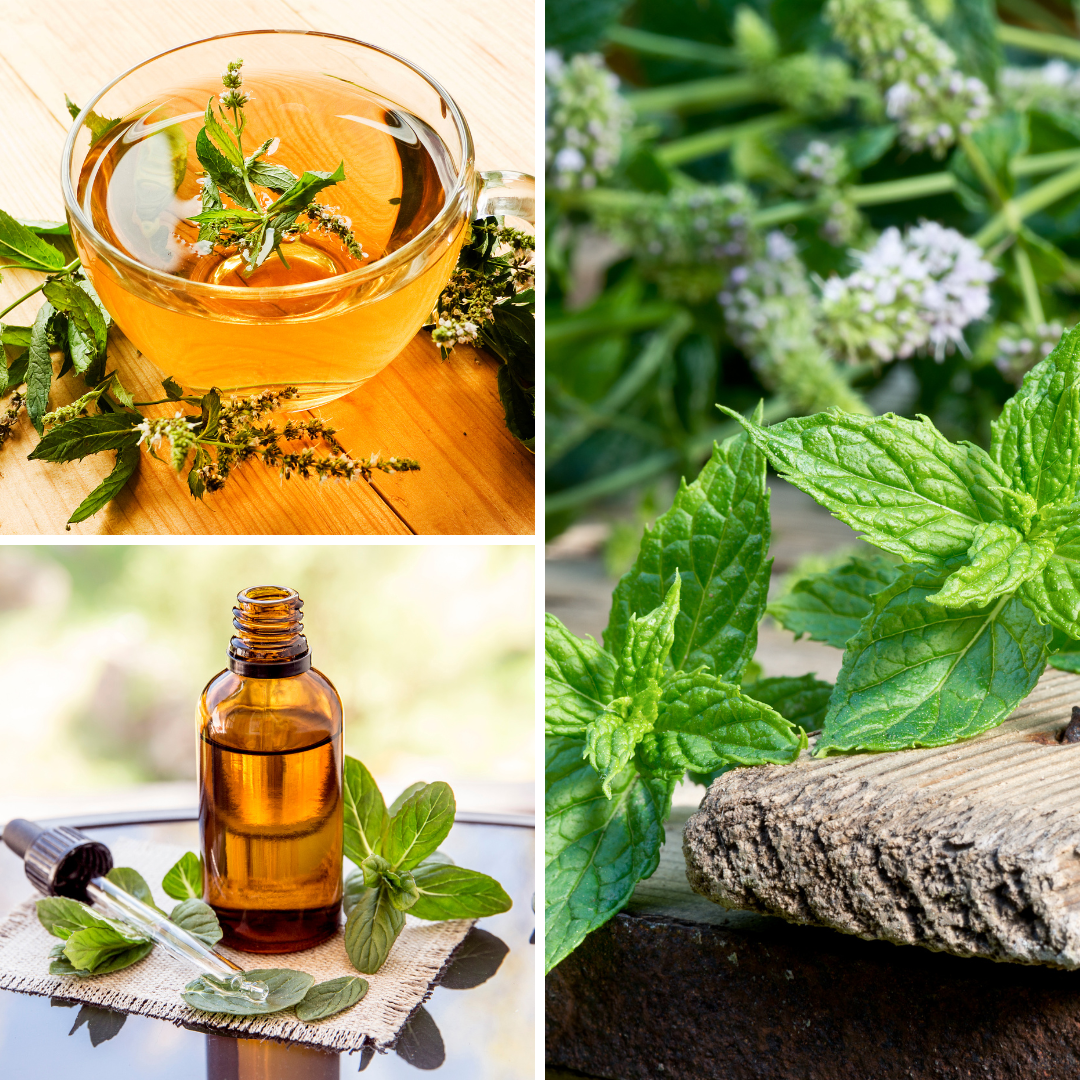
Peppermint
“Peppermint’s origin is a mystery, but it has been in existence for a long time—dried leaves were found in Egyptian pyramids dating from around 1000 bce. It was highly valued by the Greeks and Romans, but only became popular in Western Europe in the 18th century. Peppermint’s chief therapeutic value lies in its ability to relieve gas, flatulence, bloating, and colic, though it has many other applications.
Habitat & Cultivation
“Peppermint is grown commercially and in gardens throughout Europe, Asia, and North America. It is propagated from seed in spring and is harvested just before it flowers in summer, in dry sunny weather.
Related Species
“Peppermint is a hybrid of watermint (M. aquatica) and spearmint (M. spicata), which have similar, though milder, therapeutic properties.
Key Actions
■ Antispasmodic
■ Stimulates sweating
■ Antimicrobial
■ Analgesic
■ CarminativeResearch
■ Volatile oil
“Research has shown that the volatile oil is strongly antibacterial. Menthol (a constituent of the oil) is antiseptic, antifungal, cooling, and anesthetic to the skin, although it is also an irritant.
■ Whole herb
“The whole plant has an antispasmodic effect on the digestive system. Clinical trials in Denmark and the UK during the 1990s have confirmed its value in the treatment of irritable bowel syndrome.
Traditional & Current Uses
■ Digestive problems
“Peppermint is excellent for the digestive system, increasing the flow of digestive juices and bile and relaxing the gut muscles. It reduces nausea, colic, cramps, and gas, and soothes an irritated bowel. In soothing the lining and muscles of the colon, it helps diarrhea and relieves a spastic colon (often the cause of constipation).
■ Pain relief
“Applied to the skin, peppermint relieves pain and reduces sensitivity. It also relieves headaches and migraines linked to digestive weakness.
■ Infection
“Diluted oil is used as an inhalant and chest rub for respiratory infections. The whole herb is important for digestive infections. Chevallier, Andrew. Encyclopedia of Herbal Medicine, pg. 114.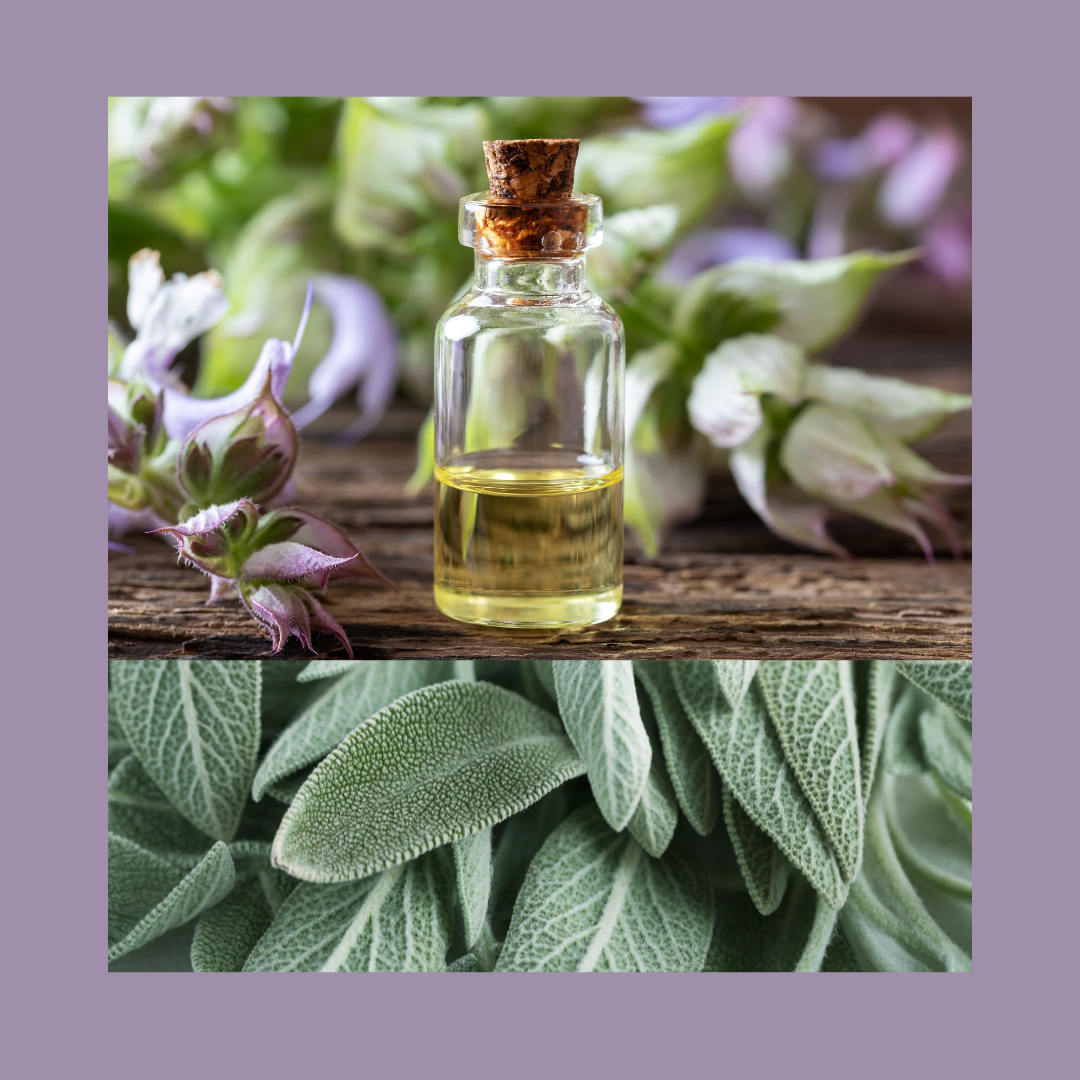
Sage
“Sage’s botanical name is a clue to its medicinal importance: Salvia comes from salvare, meaning ‘to cure’ in Latin. A medieval saying echoes this: ‘Why should a man die while sage grows in his garden?’ Today, sage is an excellent remedy for sore throats, poor digestion, and irregular periods, and it is also taken as a gently stimulating tonic. It has a slightly warm, noticeably bitter, and astringent taste.
Habitat & Cultivation
“Native to the Mediterranean, sage is cultivated all around the world, thriving in sunny conditions. It is grown from seed in spring and the plants are replaced after 3 to 4 years. The leaves are picked in summer.
“Related Species In all, there are about 500 species of Salvia. Spanish sage (S. lavandulifolia) is the most familiar culinary variety and does not contain thujone. Two close relatives of S. officinalis are dan shen (S. miltiorrhiza, p. 130) and clary sage (S. sclarea, p. 265).
Key Actions
■ Antiseptic
■ Astringent
■ Clears mucus
■ Nerve tonic
■ Estrogenic
Research
■ Nerve tonic
“Ongoing research taking place in the UK provides strong support for the traditional use of sage to enhance memory. In the most recent study (2008), healthy volunteers averaging 73 years of age showed a significant improvement in memory processing and accuracy of attention after taking a single dose of sage extract. Interestingly, a moderate dose, equivalent to 2.5 g of sage, proved most effective, more so than higher doses.
■ Sore throat
“In a randomized trial published during 2006, a sage throat spray was found to relieve throat pain in people who had acute throat infection.
■ Hormonal activity
“The herb’s longstanding use during menopause has also been researched. In the most recent study, undertaken in Switzerland (2011), women with at least 12 months of hot flashes reported an average 64% decrease in symptoms after 8 weeks of taking sage.
■ Lowering blood fat levels
“A clinical trial published in 2011 in Phytotherapy Research concluded that ‘sage may be effective and safe in the treatment of hyperlipidemia.’ All blood fat markers showed improvement in those taking sage.
Traditional & Current Uses
■ Sore throat
“Sage’s combination of antiseptic and astringent action makes it ideal as a gargle for sore throats and throat infections. It can equally be used for mouth ulcers and sore gums.
■ Hormonal remedy
“A valuable remedy for irregular and scanty periods, sage encourages better blood flow at menstruation. The herb is thought to reduce or prevent sweating and can prove particularly effective during menopause. It also helps to reduce hot flashes and night sweats and it has a calming, relaxant aspect. Sage will decrease breast-milk production, and is traditionally taken by a mother while weaning.
■ Digestive tonic
“Sage has a long traditional use as a digestive aid, supporting stomach health and promoting better digestion and absorption.” Chevaldrew. Encyclopedia of Herbal Medicine, pg. 131
Clary Sage
Image Credit: Wikipedia
Clary Sage
Description Square-stemmed biennial growing to 3 ft (1 m). Has hairy wrinkled leaves and whorls of pale blue flowers. Habitat & Cultivation Native to southern Europe and the Middle East, clary sage is now cultivated in France and Russia for its essential oil. It prefers sunny conditions and dry soil. It is gathered in summer, usually in its second year. Parts Used Aerial parts, seeds, and the essential oil. Constituents Clary sage contains 0.1% volatile oil (consisting mainly of linalyl acetate and linalool), diterpenes, and tannins. History & Folklore Clary sage has been perceived both as a weaker version of its close relative, sage (S. officinalis, p. 131), and as a significant herb in its own right. Since the seeds were once commonly used to treat eye problems, clary sage was also known as “clear eye.” Medicinal Actions & Uses An antispasmodic and aromatic plant, clary sage is used today mainly to treat digestive problems such as gas and indigestion. It is also regarded as a tonic, calming herb that helps relieve period pain and premenstrual problems. Owing to its estrogen-stimulating action, it is most effective when levels of this hormone are low. The plant can therefore be a valuable remedy for complaints that are associated with menopause, particularly hot flashes. Cautions Do not take clary sage essential oil internally. Do not use clary sage during pregnancy
Chevallier, Andrew. Encyclopedia of Herbal Medicine, pg. 265.
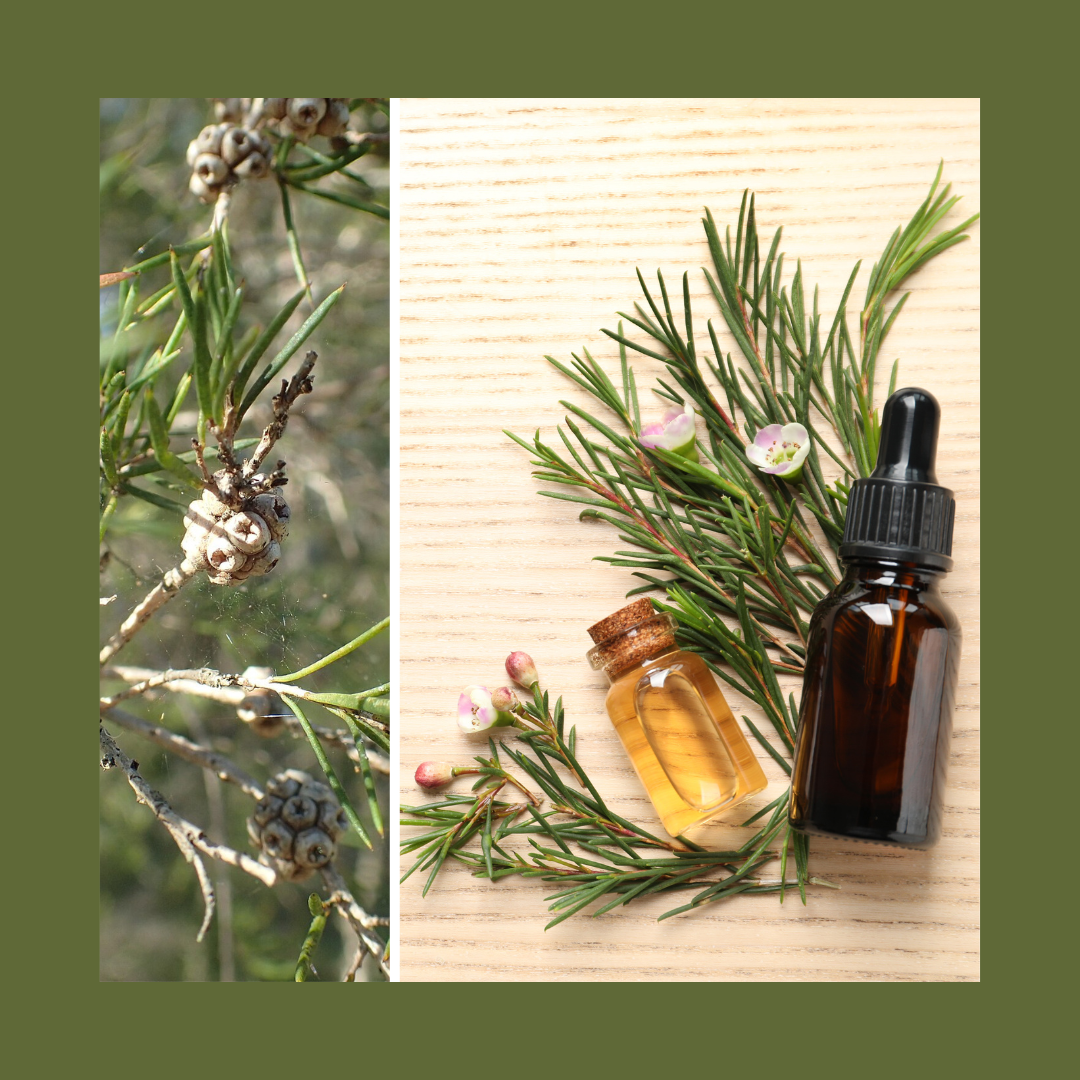
Tea tree
“An evergreen reaching 23 ft (7 m), with layers of papery bark, pointed leaves, and white flower spikes. Tea tree provides one of the most effective natural antiseptics.
Habitat & Cultivation
“Tea tree is native to Australia, flourishing in moist soils in northern New South Wales and Queensland. It is now cultivated extensively, especially in New South Wales. Tea tree is grown from cuttings in summer. The leaves and small branches are picked throughout the year and distilled to produce essential oil.
Key Actions
■ Antiseptic
■ Antibacterial
■ Antifungal
■ Antiviral
■ Immune stimulant Research
■ Antiseptic properties
“Tea tree essential oil was first researched in 1923 in Australia. Since the 1960s it has been intensively investigated, and its antiseptic properties are well established. Clinical trials, mainly in Australia, have shown that it is effective at treating a broad range of infectious conditions, especially fungal and skin problems such as vaginal yeast, acne, and warts.
■ Active constituents
“One of the most important constituents is known to be terpinen-4-ol, which is significantly antiseptic and well tolerated by the skin. The oil also contains cineol, which can irritate the skin. The cineol content varies— poor-quality oil has more than 10%; in some cases up to 65%.
Traditional & Current Uses
■ Traditional remedy
“Tea tree is a traditional Aboriginal remedy. The leaves are crushed and either inhaled or used in infusions for coughs, colds, and skin infections.
■ Skin problems
“Tea tree can be applied to skin infections such as athlete’s foot and ringworm, as well as to corns, warts, acne, and boils, infected burns, wounds, insect bites and stings, and other skin conditions.
■ Chronic infections
“Tea tree may be taken internally as a treatment for chronic, and some acute, infections, notably cystitis, glandular fever, and chronic fatigue syndrome.
■ Oral infections
“The herb is effective in mouthwashes, countering oral infection and gum disease, and it can also be used as a gargle for sore throats.
■ Vaginal infections
“Tea tree is an excellent remedy for vaginal irritation and infection, including yeast Parts Used Key Preparations & Their Uses Leaves have high levels of a strongly antiseptic volatile oil and are used in preparations for skin problems and infections.
Essential oil
“Add 3 drops to 12 drops carrier oil and dab onto athlete’s foot. infections. It may be used as a pessary or can be diluted in a carrier cream and then applied.
“Tea tree, and in particular its essential oil, is one of the most important natural antiseptics. Useful for stings, burns, wounds, and skin infections of all kinds, the herb merits a place in every medicine chest. Tea tree is native to Australia and is a traditional remedy of the Aborigines. Its therapeutic properties were first researched during the 1920s, and it is now widely used in Europe and the U.S., as well as in Australia.” Chevallier, Andrew. Encyclopedia of Herbal Medicine, pg. 112.
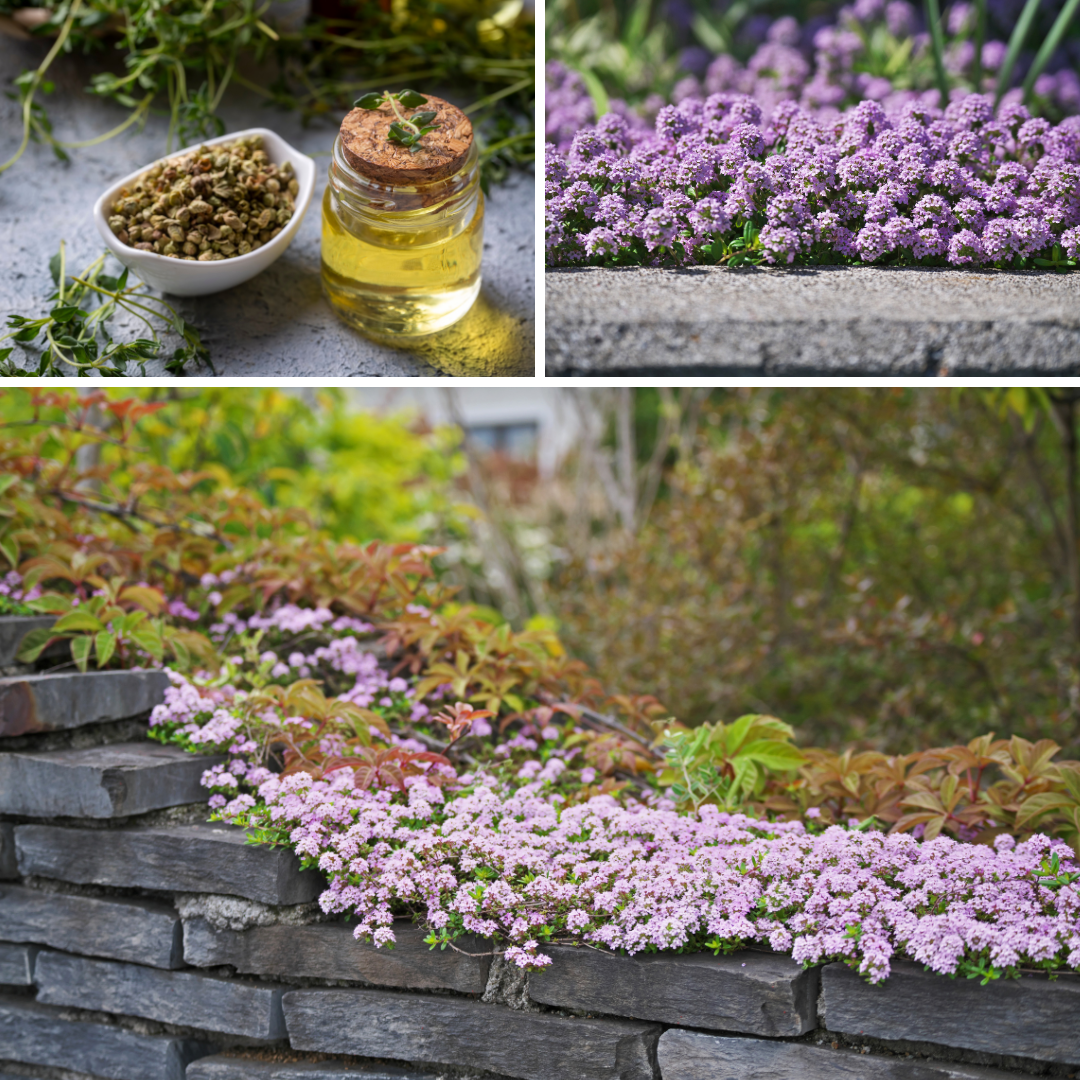
Thyme
“Thyme was praised by the herbalist Nicholas Culpeper (1616–1654) as ‘a notable strengthener of the lungs, as notable a one as grows; neither is there a better remedy growing for that disease in children which they commonly call chin-cough [whooping cough].’ Thyme is an excellent antiseptic and tonic, and today it is still used as a respiratory remedy, as well as being important for a variety of other ailments.
Habitat & Cultivation
“Thyme is a cultivated variety of the wild thyme (T. serpyllum, p. 276) of southern Europe and is now grown worldwide. It is raised from seed or by root division in spring and prefers light, chalky soils. The aerial parts are harvested in summer. Related Species There are many Thymus species, each with a different volatile oil content. Wild thyme (T. serpyllum, p. 276) is often used in the same way as thyme
Key Actions
■ Antiseptic
■ Tonic
■ Relieves muscle spasms
■ Expectorant
■ Expels worms
■ AntioxidantResearch
■ Volatile oil
“Thyme’s volatile oil is strongly antiseptic—the constituent thymol, in particular, is a most effective antifungal. The oil is also expectorant and it expels worms.
■ Anti-aging
“Research in the 1990s in Scotland suggests that thyme and its volatile oil have a markedly tonic effect, supporting the body’s normal function and countering the effects of aging. More recent research indicates that thyme is strongly antioxidant and may help maintain higher levels of essential fatty acids within the brain.
■ Stomach ulcers
“Extracts of the herb have shown strong antibacterial activity against H. pylori, a bacterium often associated with stomach ulcers.
■ Menstrual pain
“Many compounds within thyme relieve muscle cramps. A 2014 Iranian clinical trial compared the ability of thyme and ibuprofen to relieve period pains. The findings showed both treatments to be effective.T
raditional & Current Uses
■ Infections
“The antiseptic and tonic properties of thyme make it a useful tonic for the immune system in chronic, especially fungal, infections, as well as an effective remedy for throat and chest infections.
■ Asthma & hay fever
“Thyme is prescribed with other herbs for asthma, especially in children. Its invigorating qualities balance the sedative effect of many herbs used for asthma. Thyme is also helpful in hay fever.■ Worms Thyme is often used to treat worms in children.
■ External uses
“Applied to the skin, thyme relieves bites and stings, and is used for sciatica and rheumatic pains. It helps ringworm, athlete’s foot, thrush, and other fungal infections, as well as scabies and lice.
“Thyme infusion and diluted oil are also massaged into the scalp to encourage hair growth and reverse hair loss.” Chevallier, Andrew. Encyclopedia of Herbal Medicine, pg. 143.
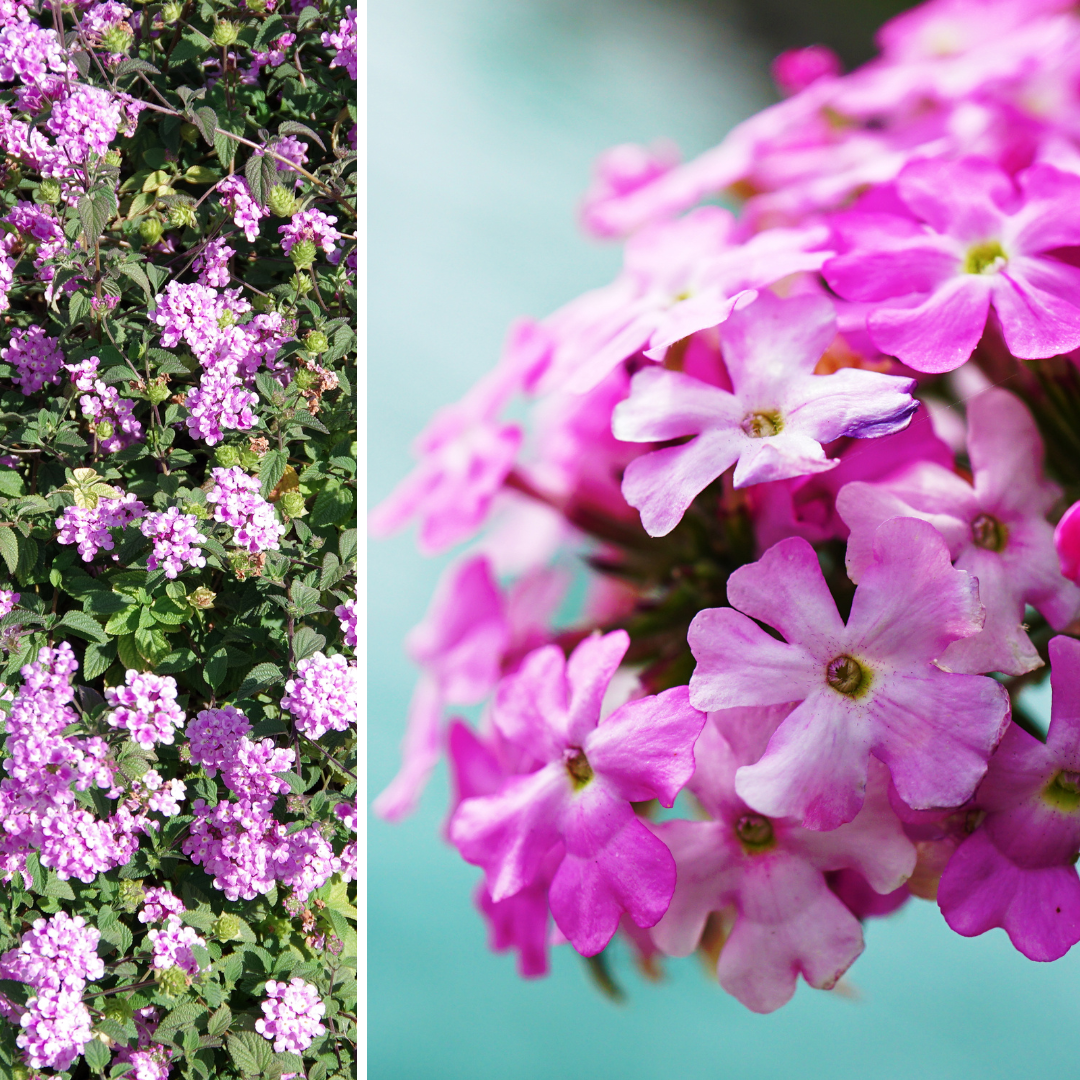
Vervain
“Vervain has long been credited with magical properties and was used in ceremonies by the Druids of ancient Britain and Gaul. It is a traditional herbal medicine in both China and Europe. Dioscorides in the 1st century ce called vervain the ‘sacred herb,’ and for many centuries it was taken as a cure-all. It has tonic, restorative properties, and is used to relieve stress and anxiety and to improve digestive function.
Habitat & Cultivation
“Vervain grows wild throughout much of Europe and North Africa as well as in China and Japan. It is propagated from seed in spring or autumn and thrives in well-drained soil in a sunny position. The aerial parts are harvested in summer when the plant is in flower.
Related Species
“Blue vervain (V. hastata), which is native to North America, is used medicinally in the same way as vervain.
Key Actions
■ Nervine
■ Tonic
■ Mild bitter
■ Mild antidepressantResearch
■ Hormonal effects
“Early indications from research into vervain are that it has both estrogenic and progestogenic activity. It also stimulates the muscles of the womb, and production of breast milk.
■ Lack of research
“For an herb with such long traditional use, surprisingly little research into vervain has occurred to date. Laboratory studies indicate that vervain has significant anti-inflammatory activity. It may also have antiviral and liverprotective properties. Verbenalin, an active compound within vervain, is strongly bitter, may cause vomiting at high doses, and stimulates contraction of the womb.
Traditional & Current Uses
■ Digestive tonic
“Vervain improves the function of the digestive system and absorption of food.
■ Nervous system
“Vervain is prized as a restorative for the nervous system and is especially helpful for nervous tension. It is thought to have a mild antidepressant action, and is used specifically to treat anxiety and the nervous exhaustion that follows long-term stress.
■ Convalescence
“By aiding digestion and restoring the nervous system, vervain is an ideal tonic for people recovering from chronic illness.
■ Headaches & migraines
“Vervain alleviates headaches, and in Chinese herbal medicine it is used for migraines connected with the menstrual cycle.
■ Other uses
“Among its other medicinal uses, vervain is given for jaundice, gallstones, asthma, insomnia, premenstrual syndrome, flu, and fevers.” Chevallier, Andrew. Encyclopedia of Herbal Medicine, pg. 149.
Sources Cited:

Chevallier, Andrew. Encyclopedia of Herbal Medicine
Discover more from Jacki Kellum
Subscribe to get the latest posts sent to your email.

